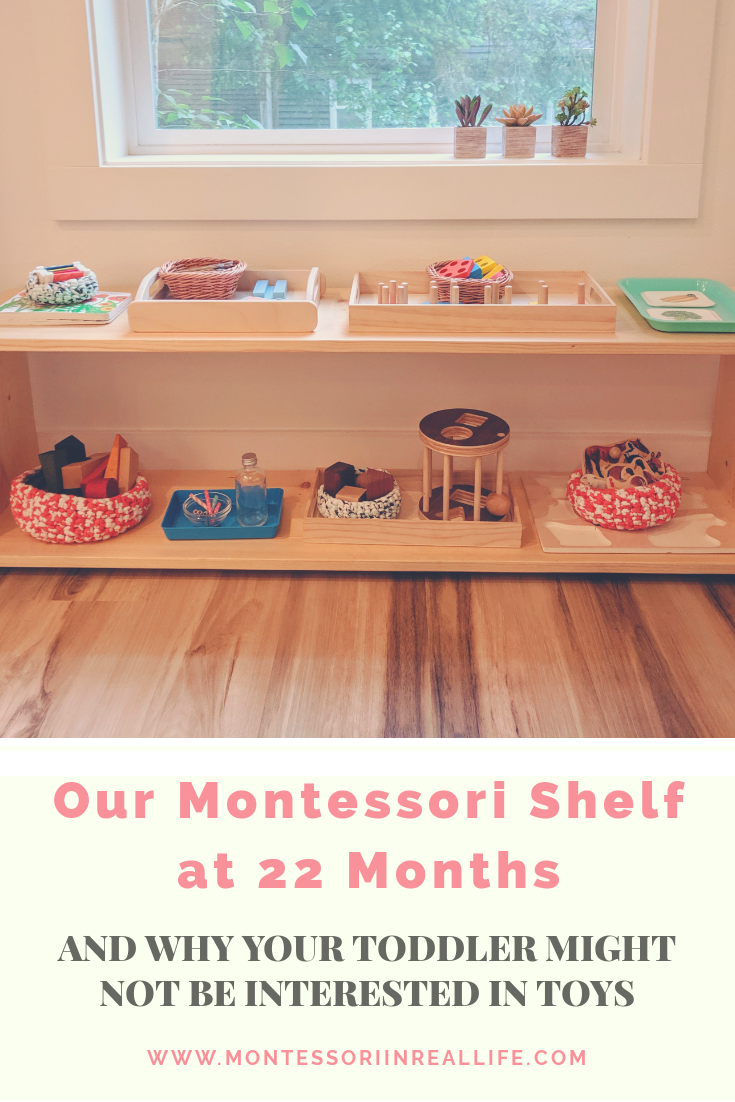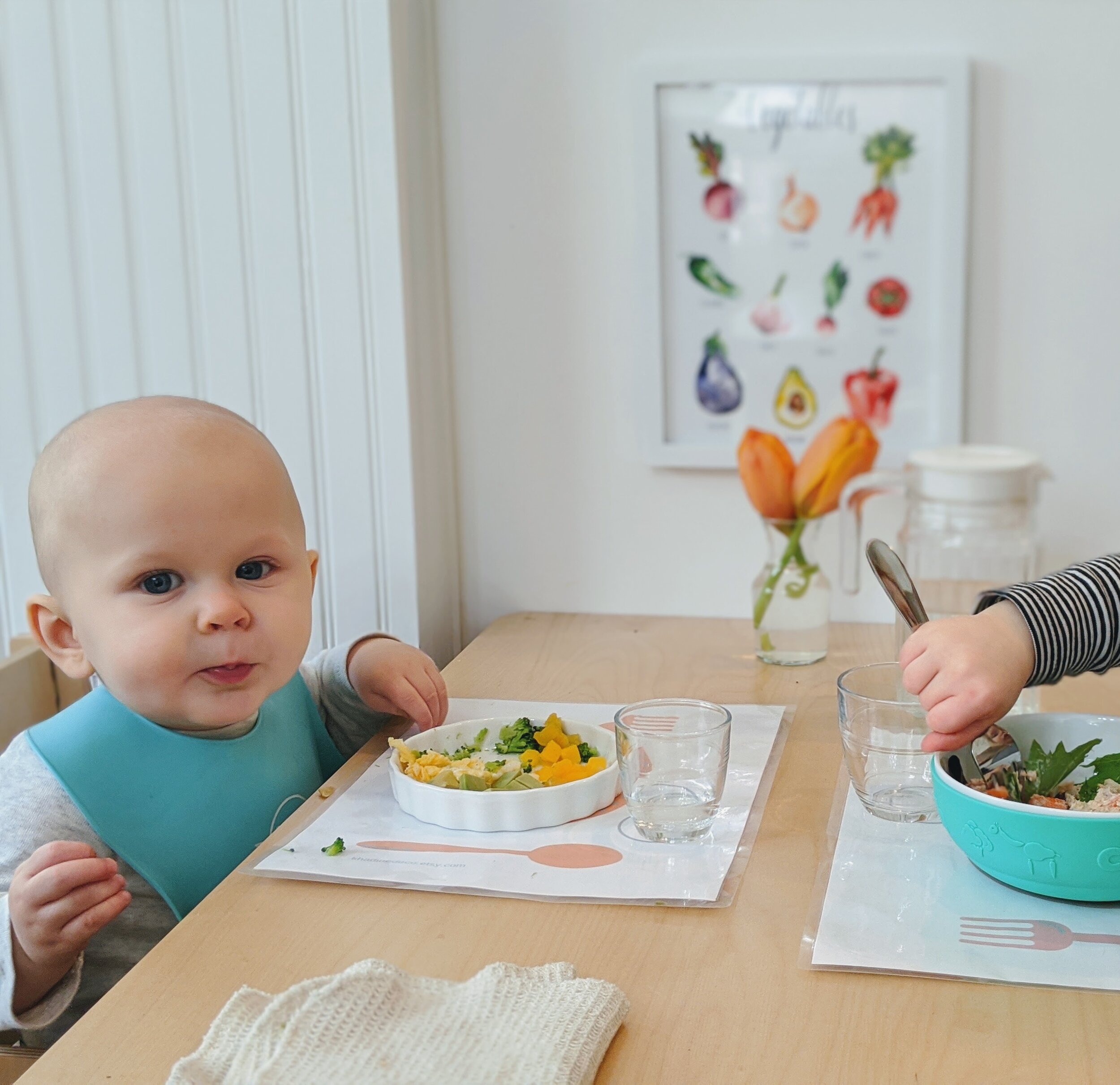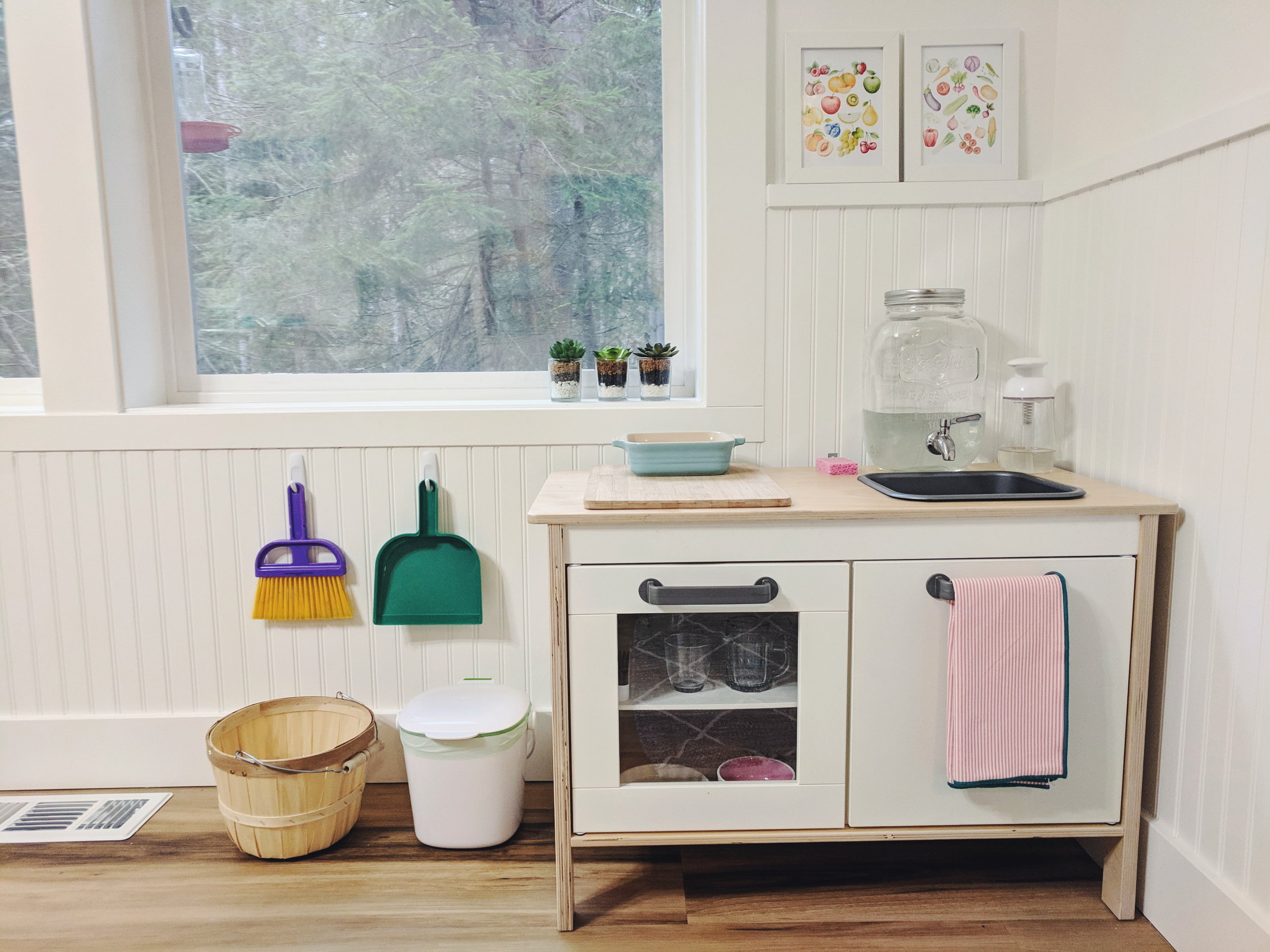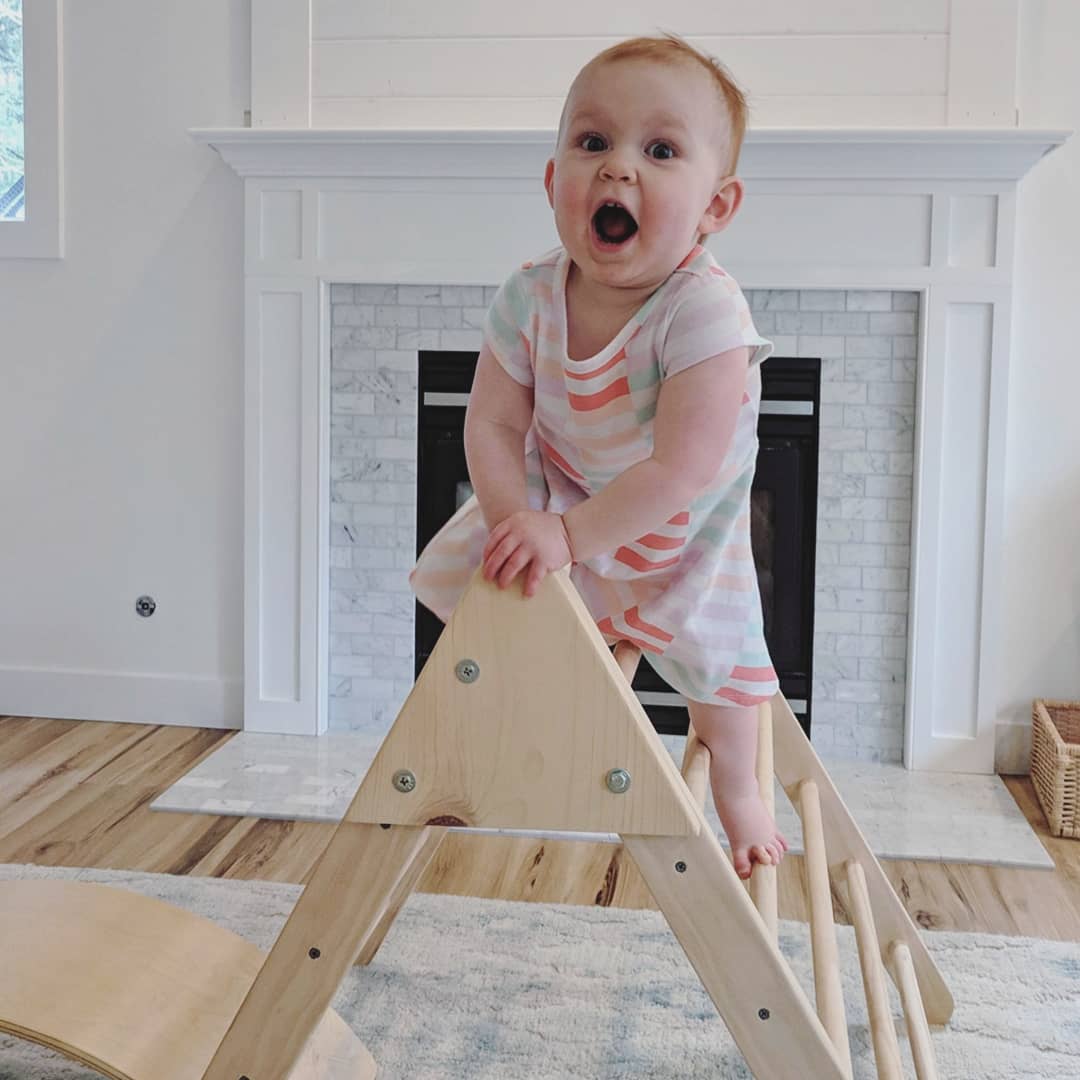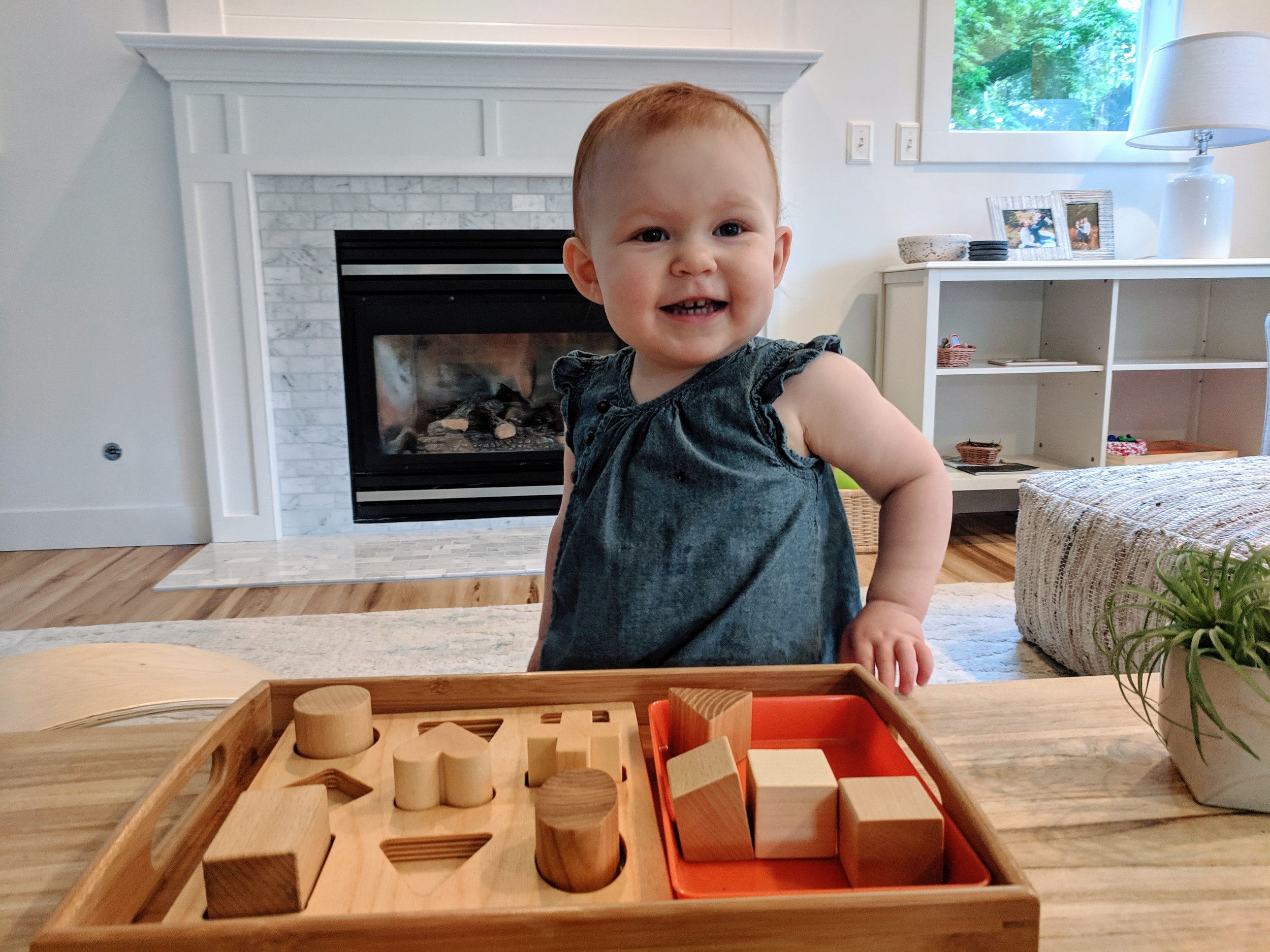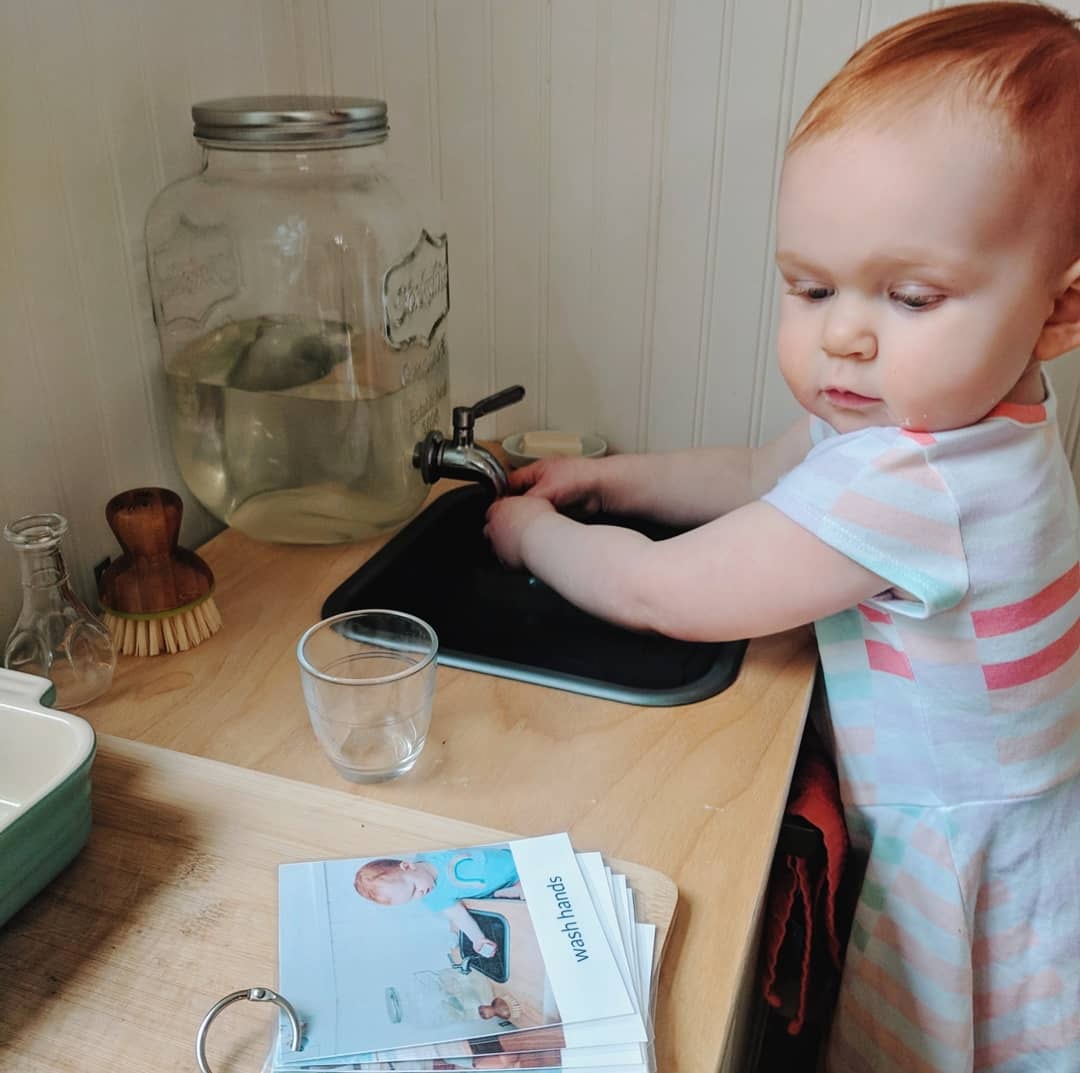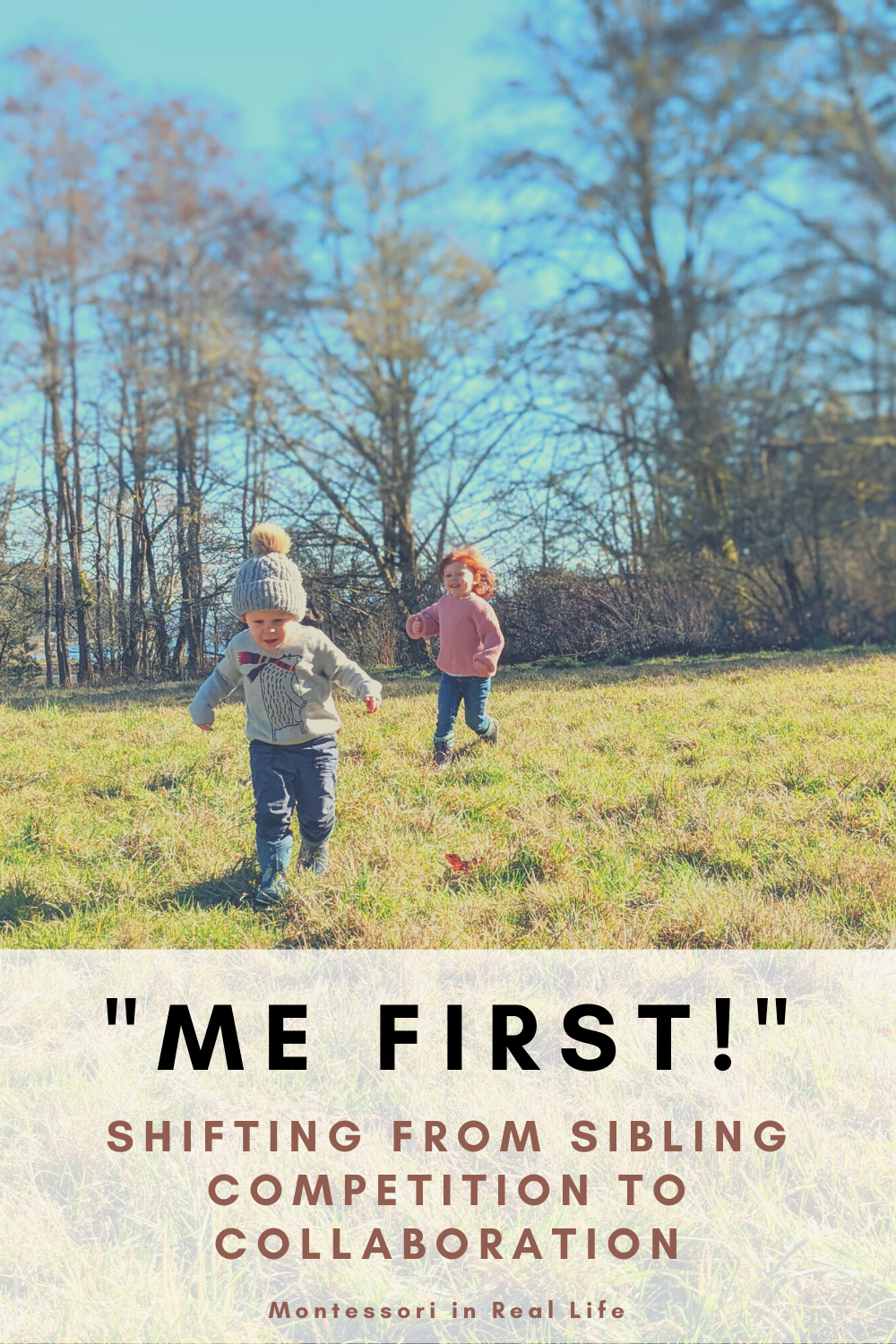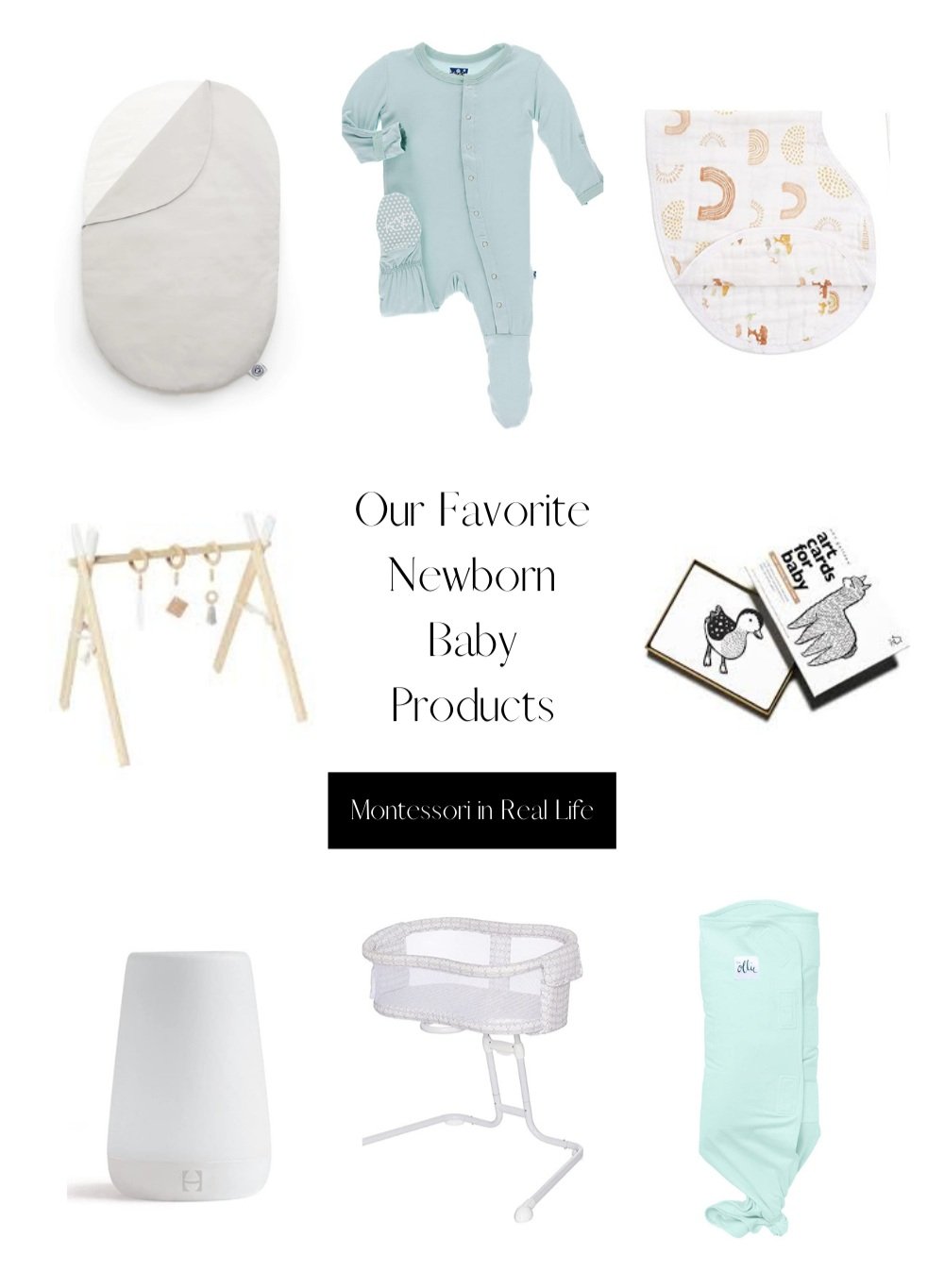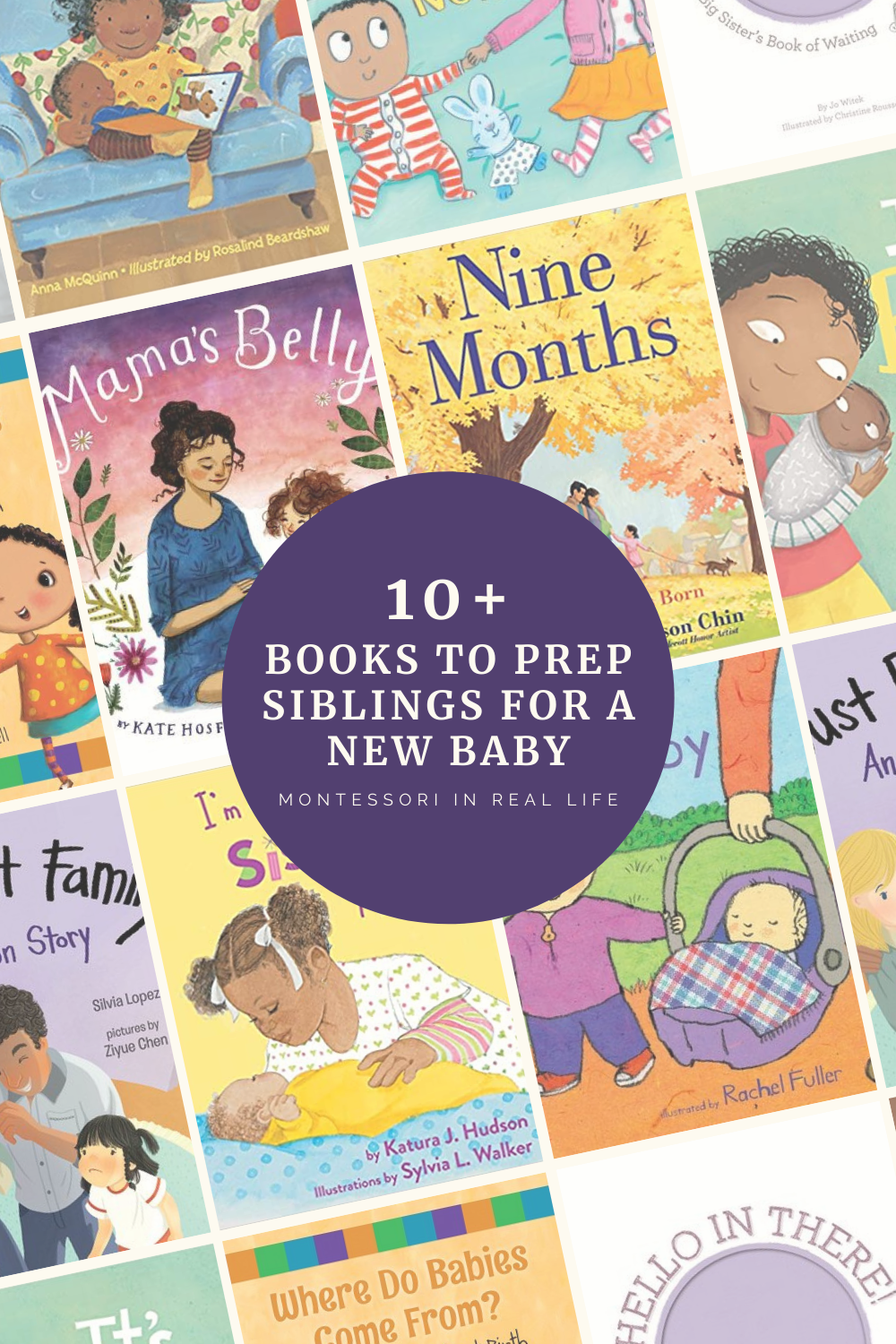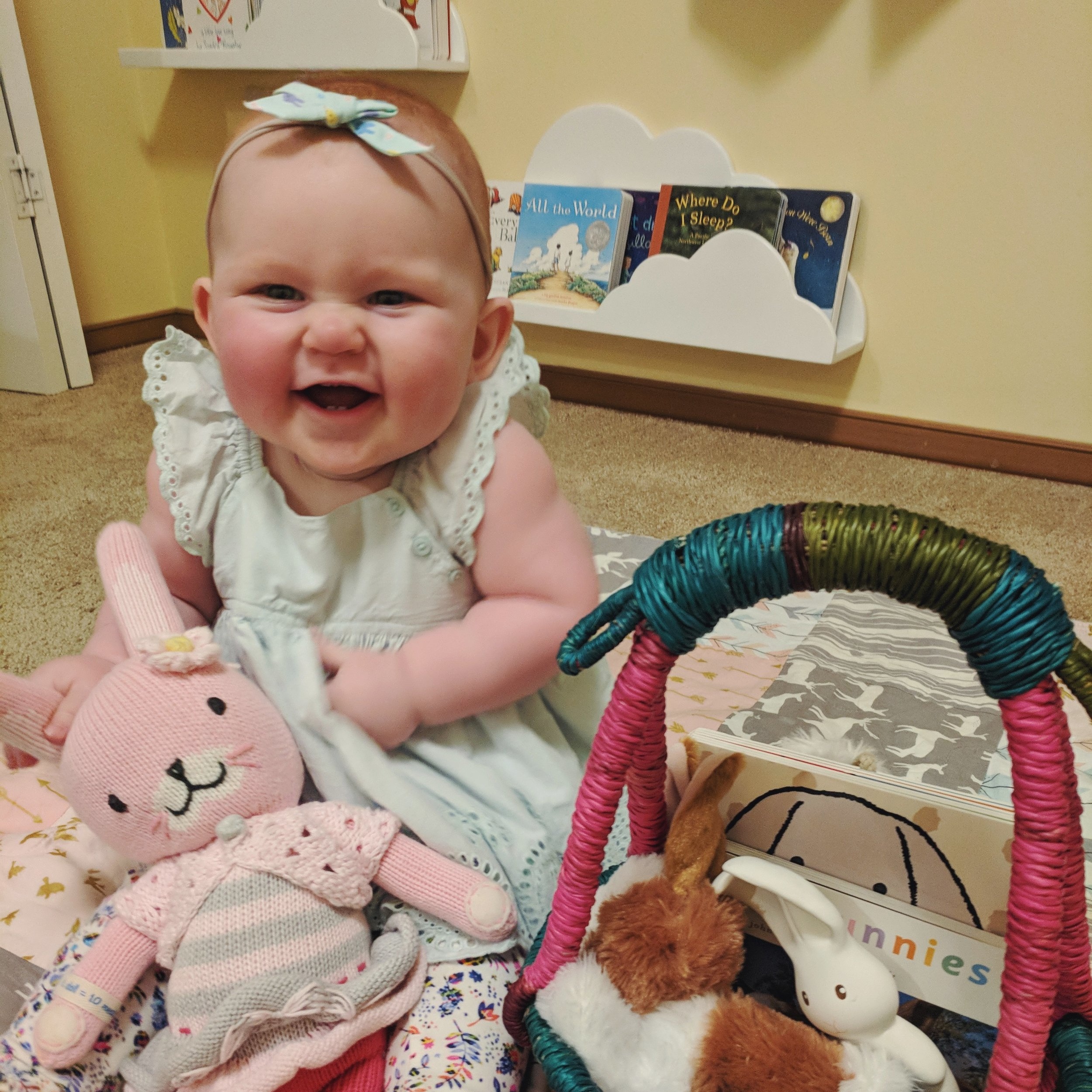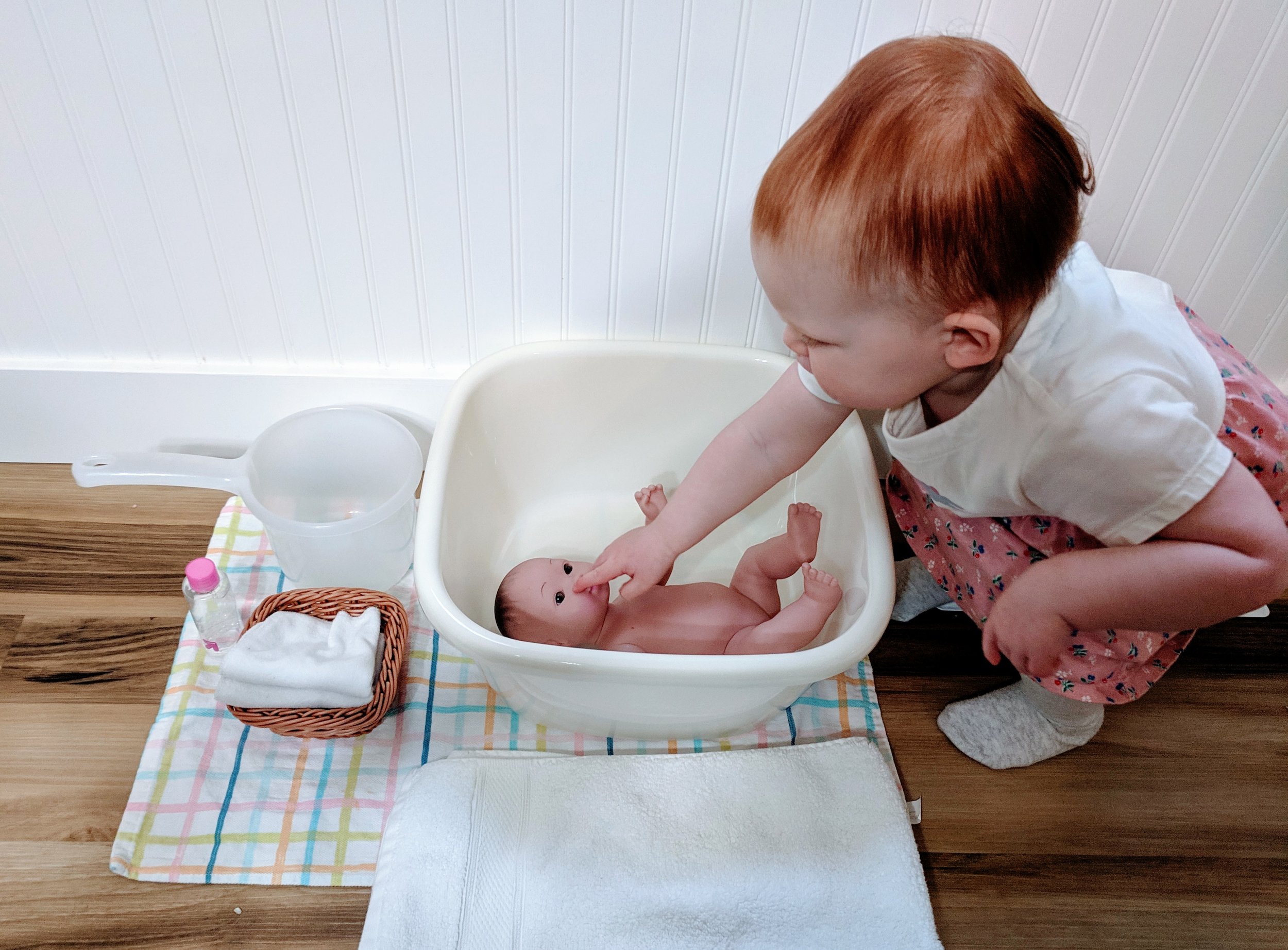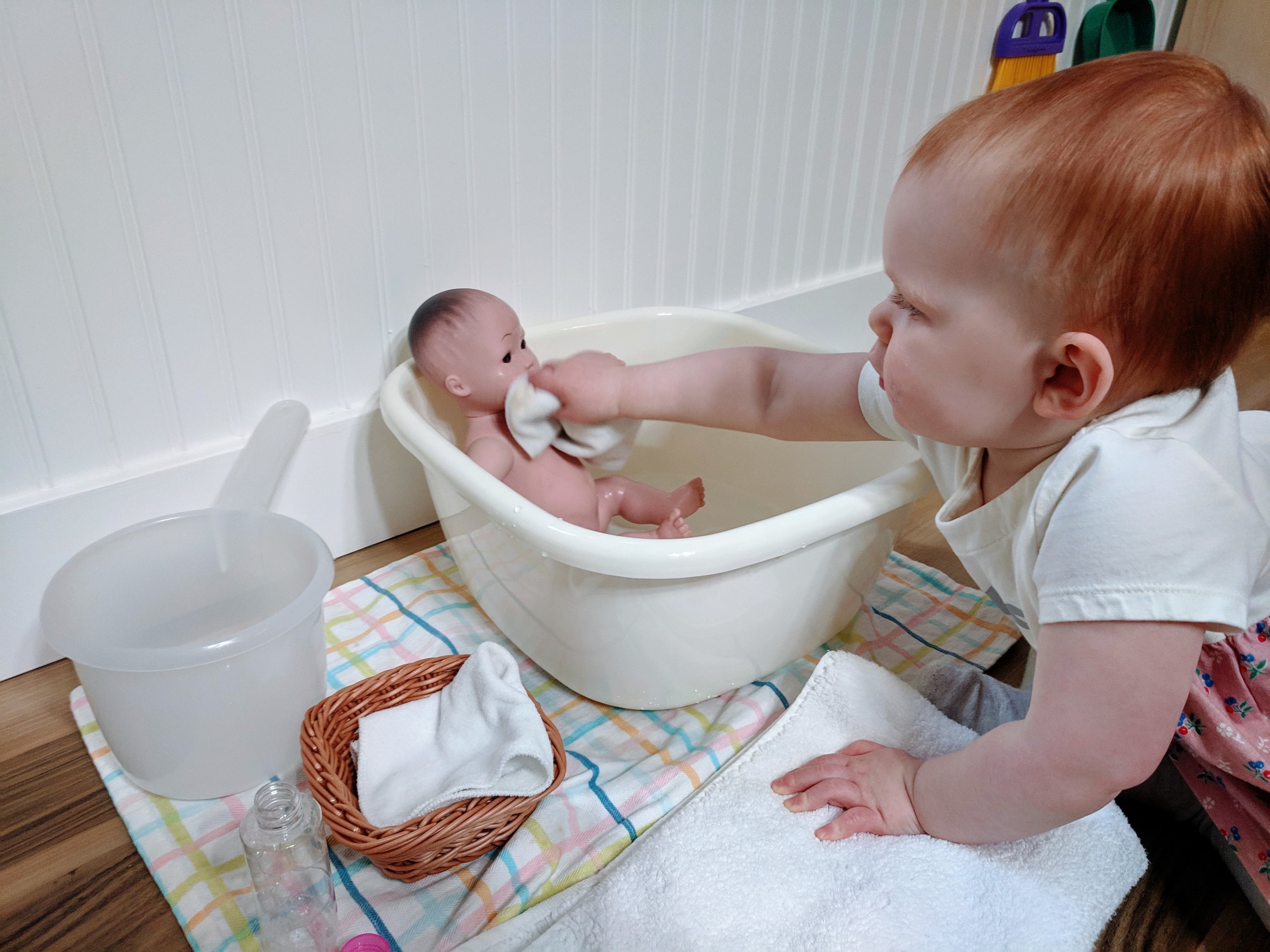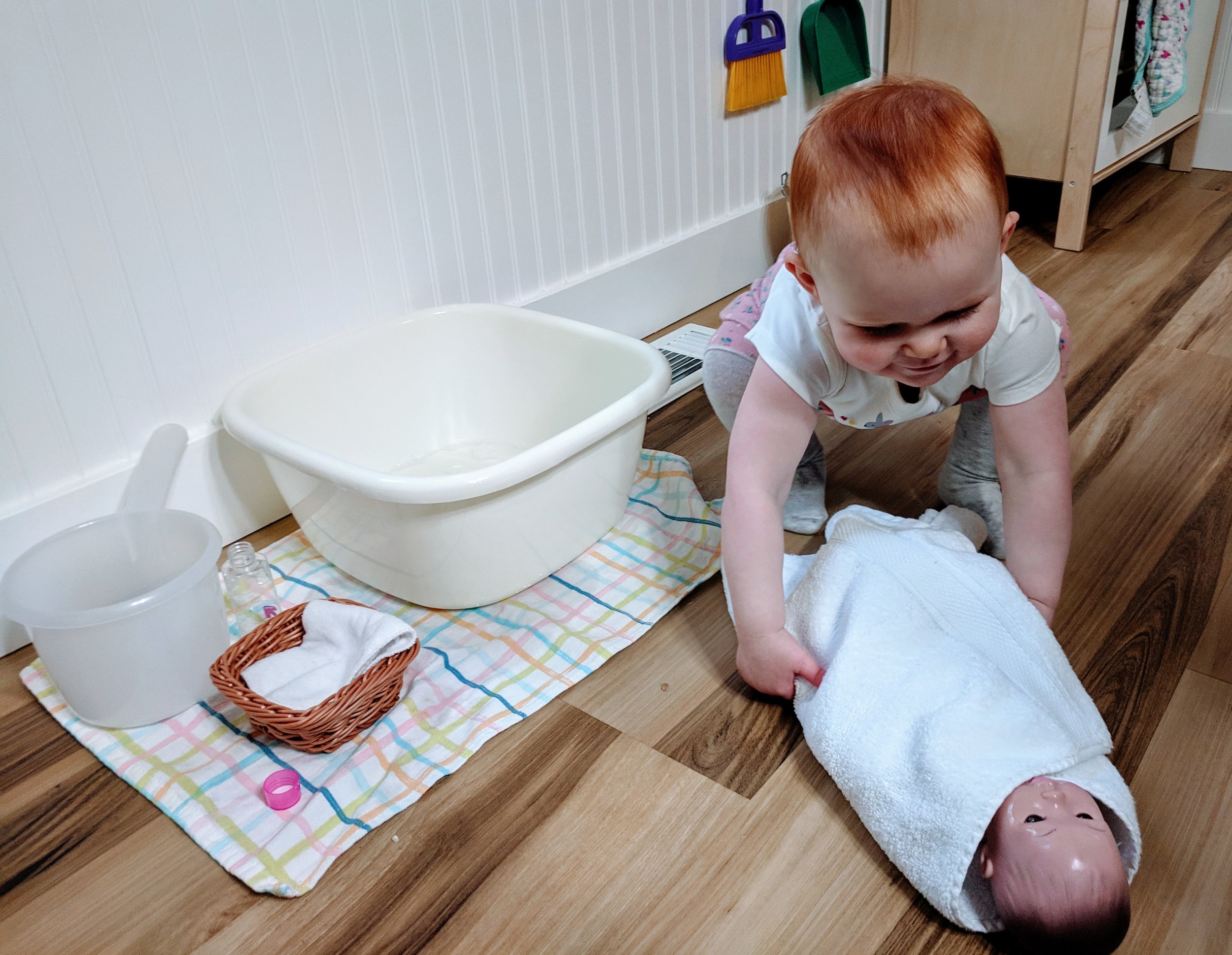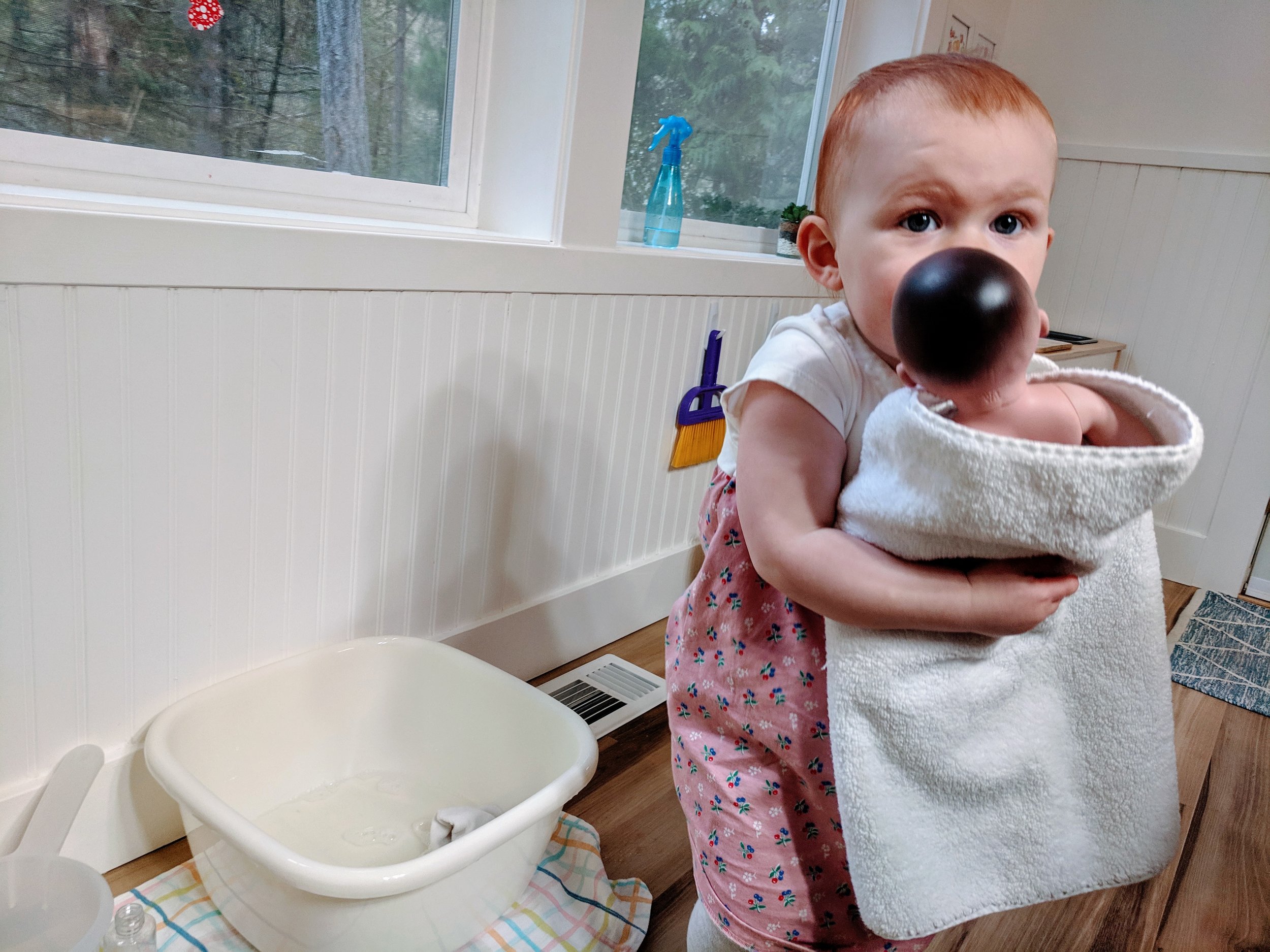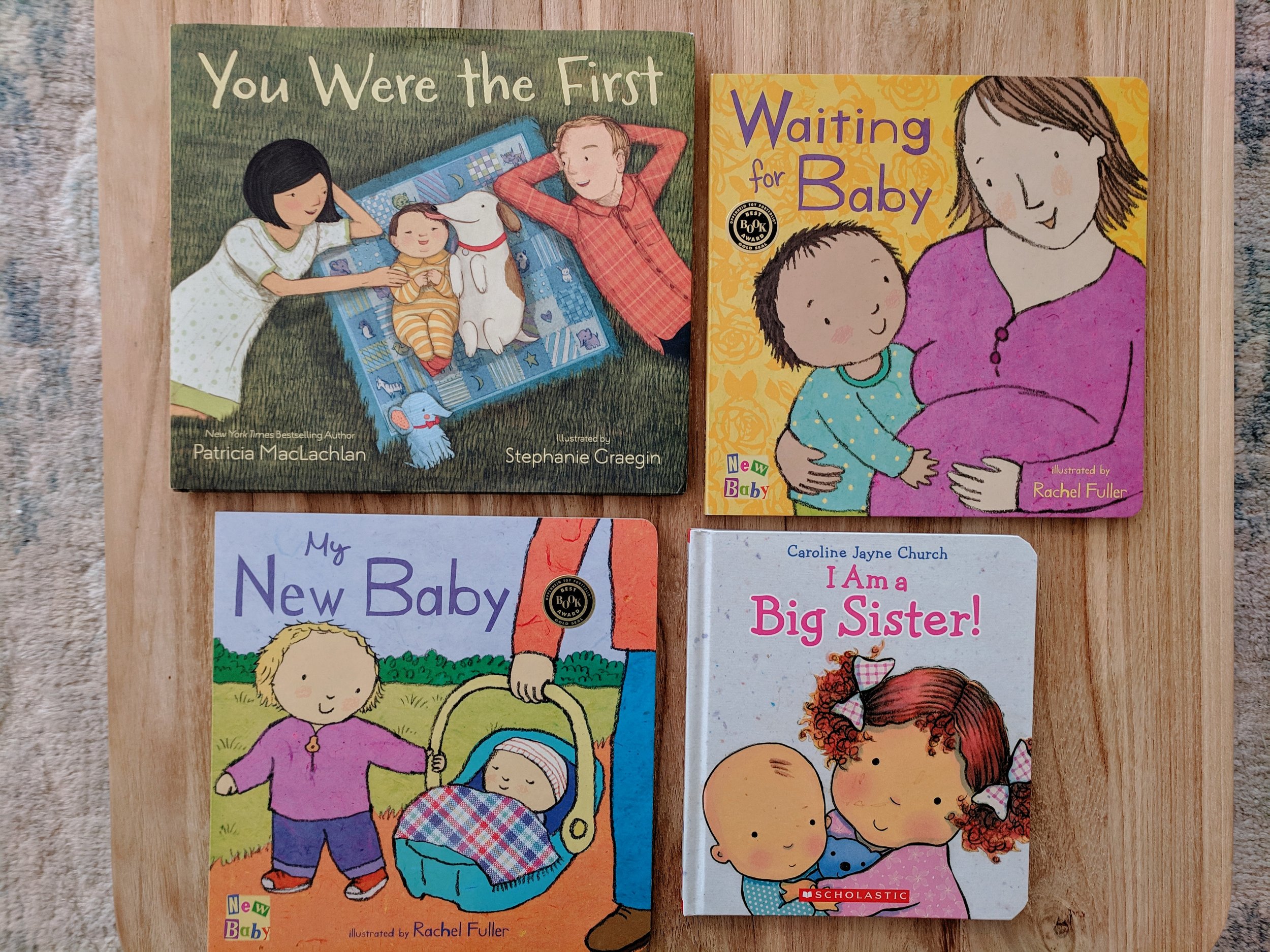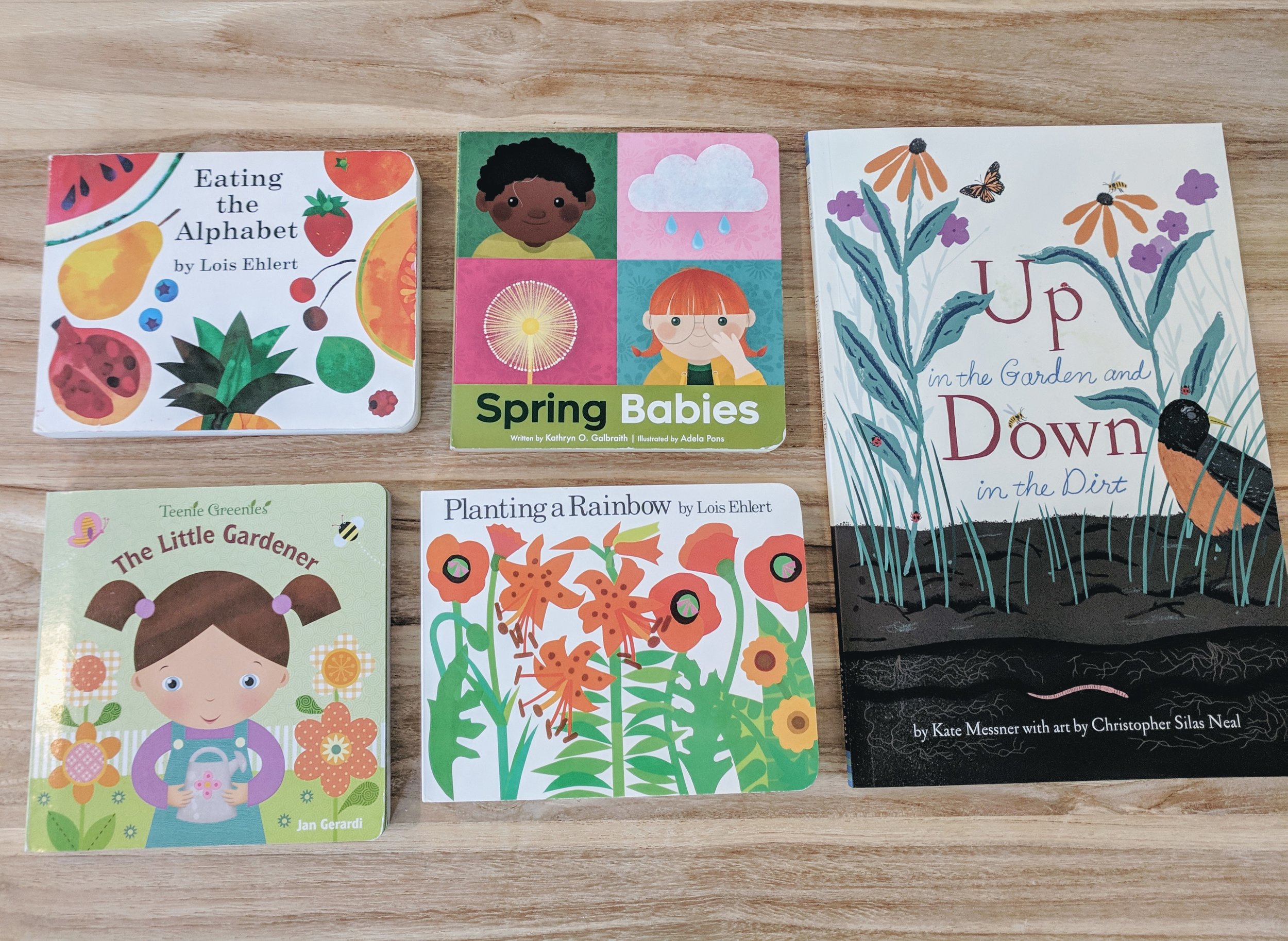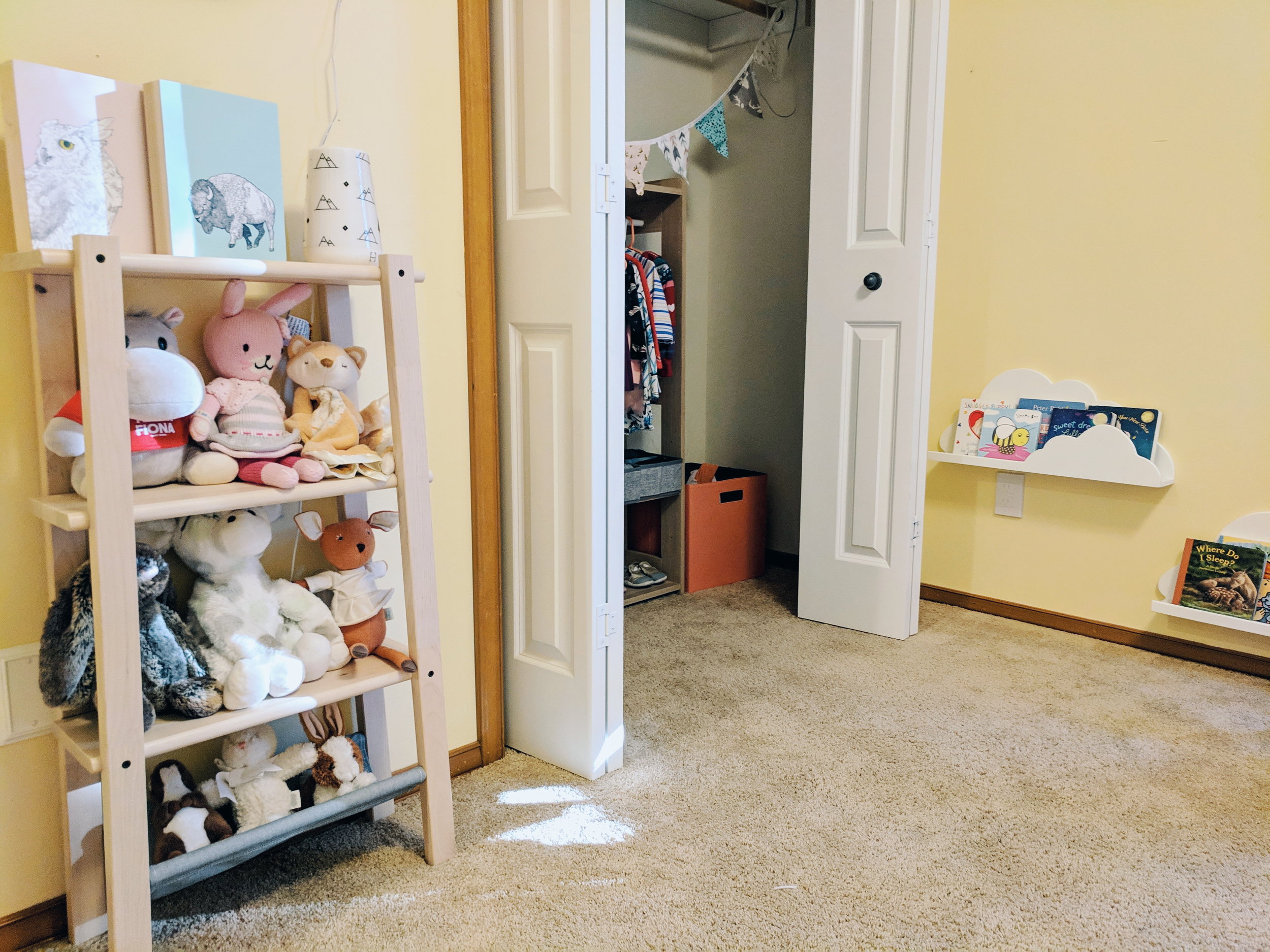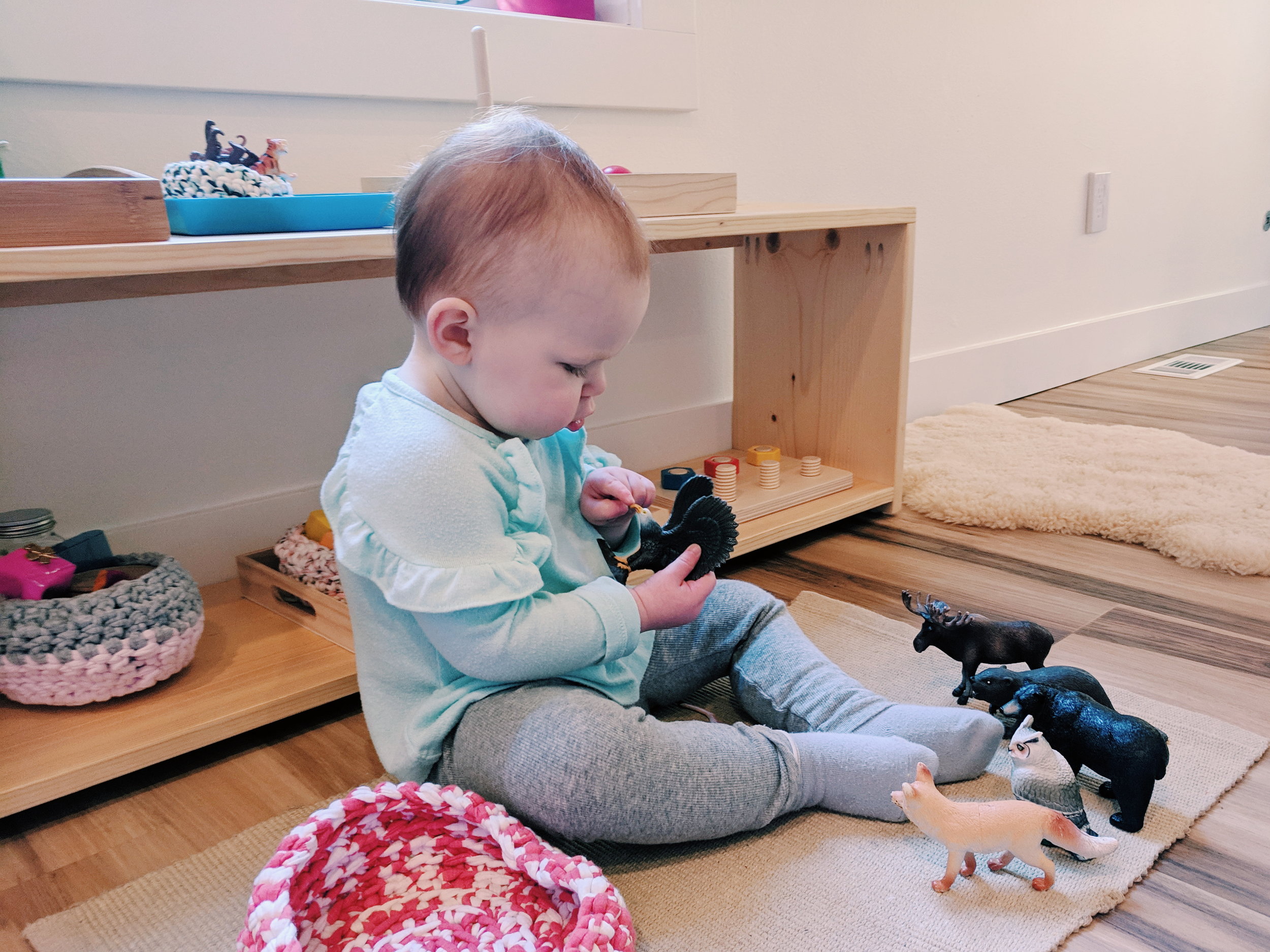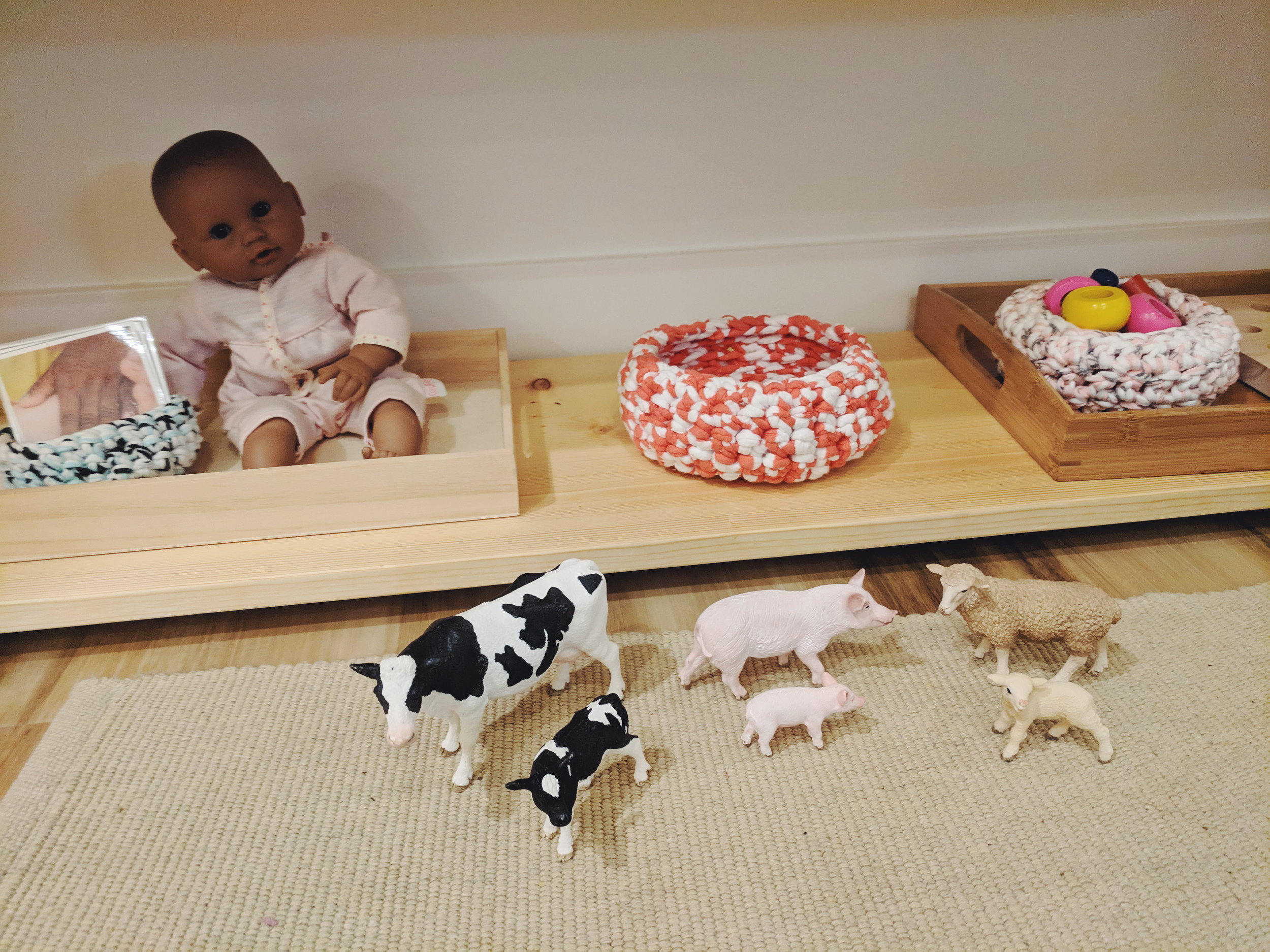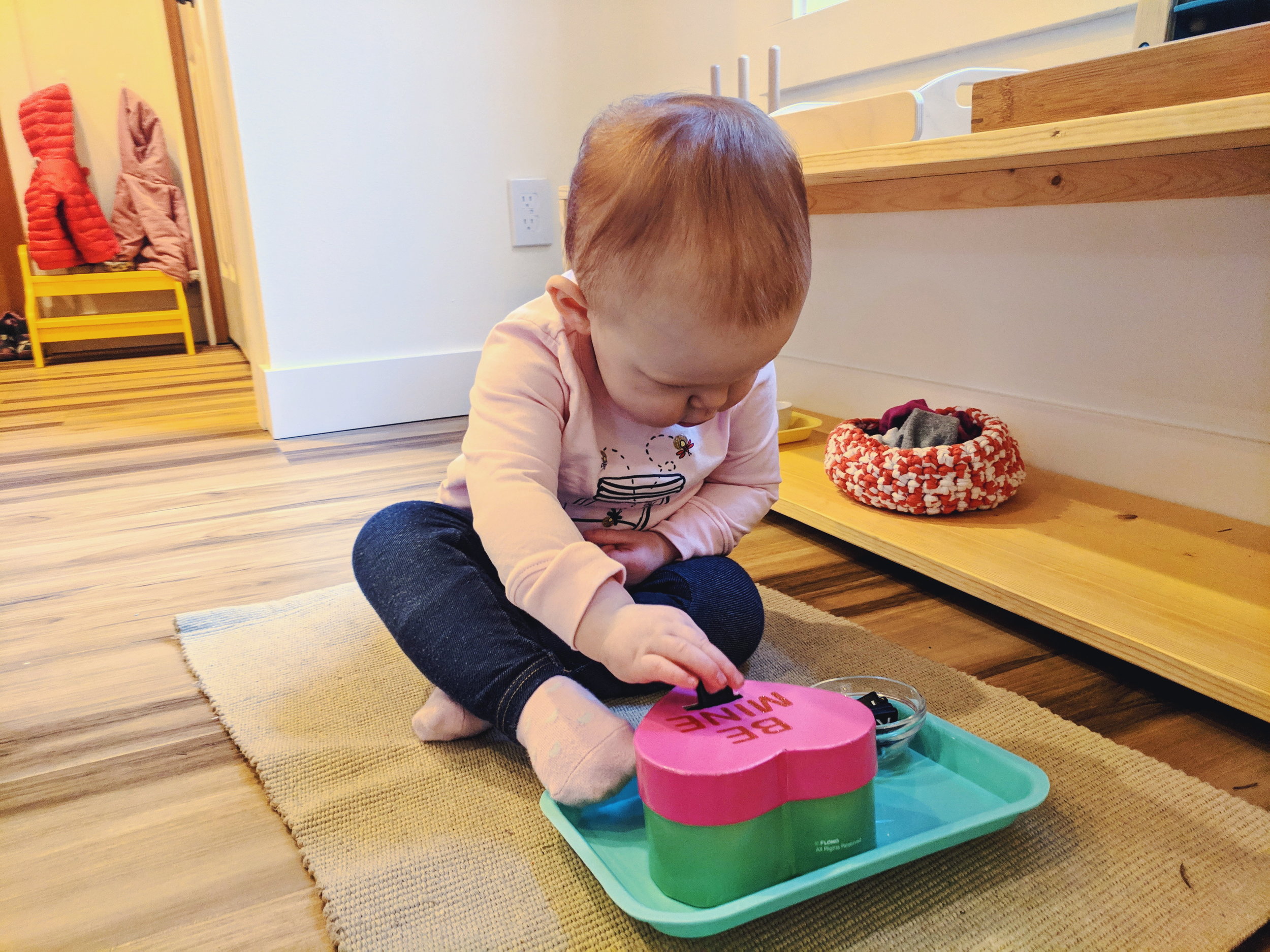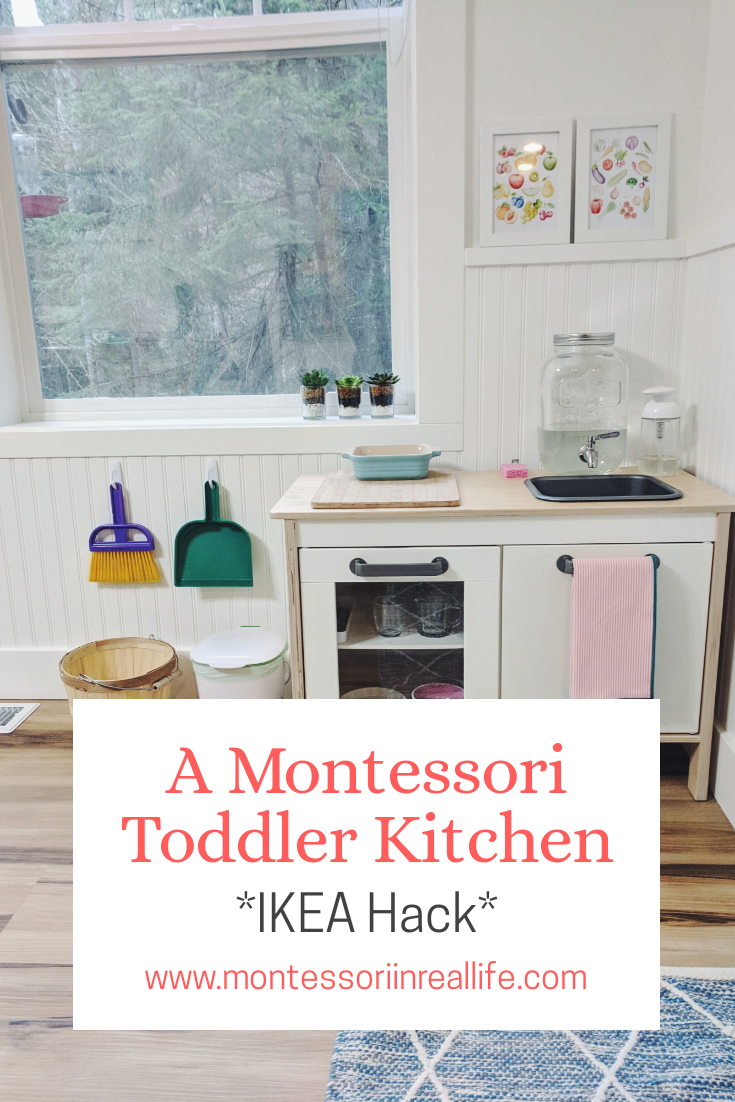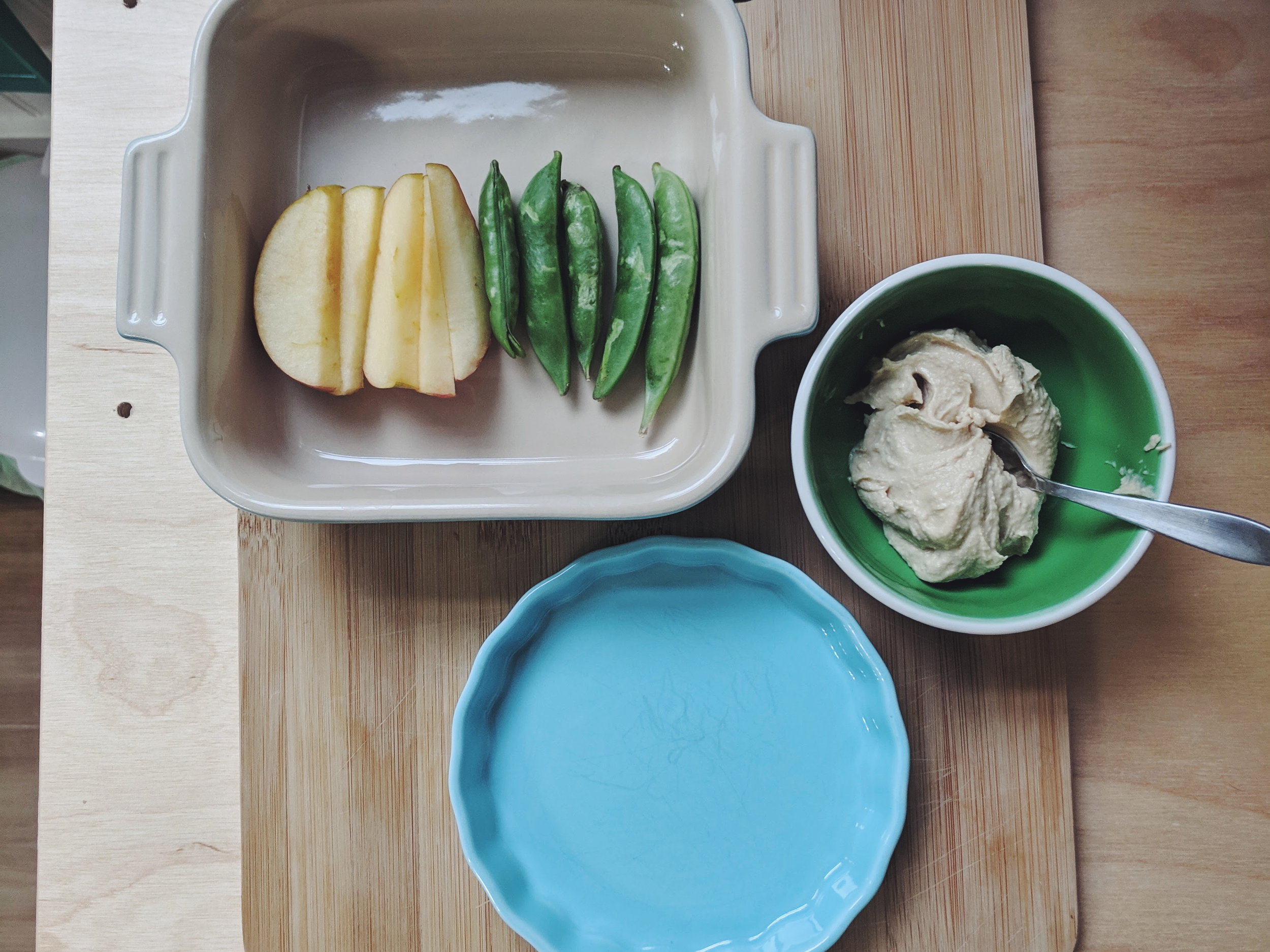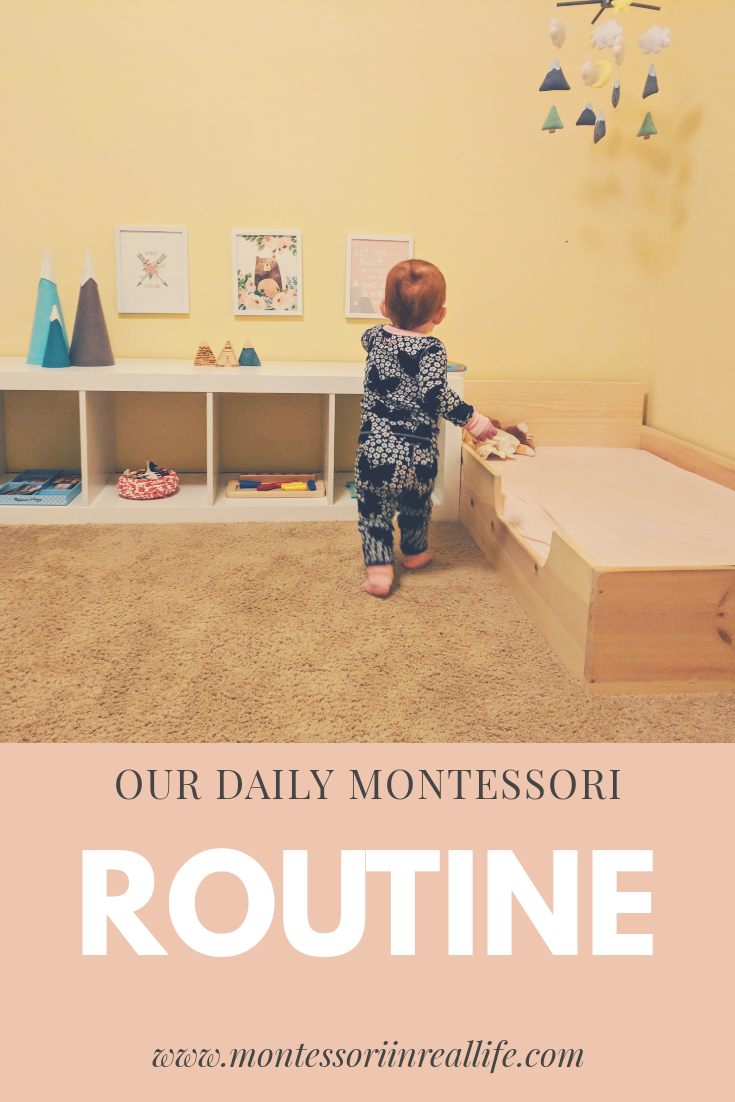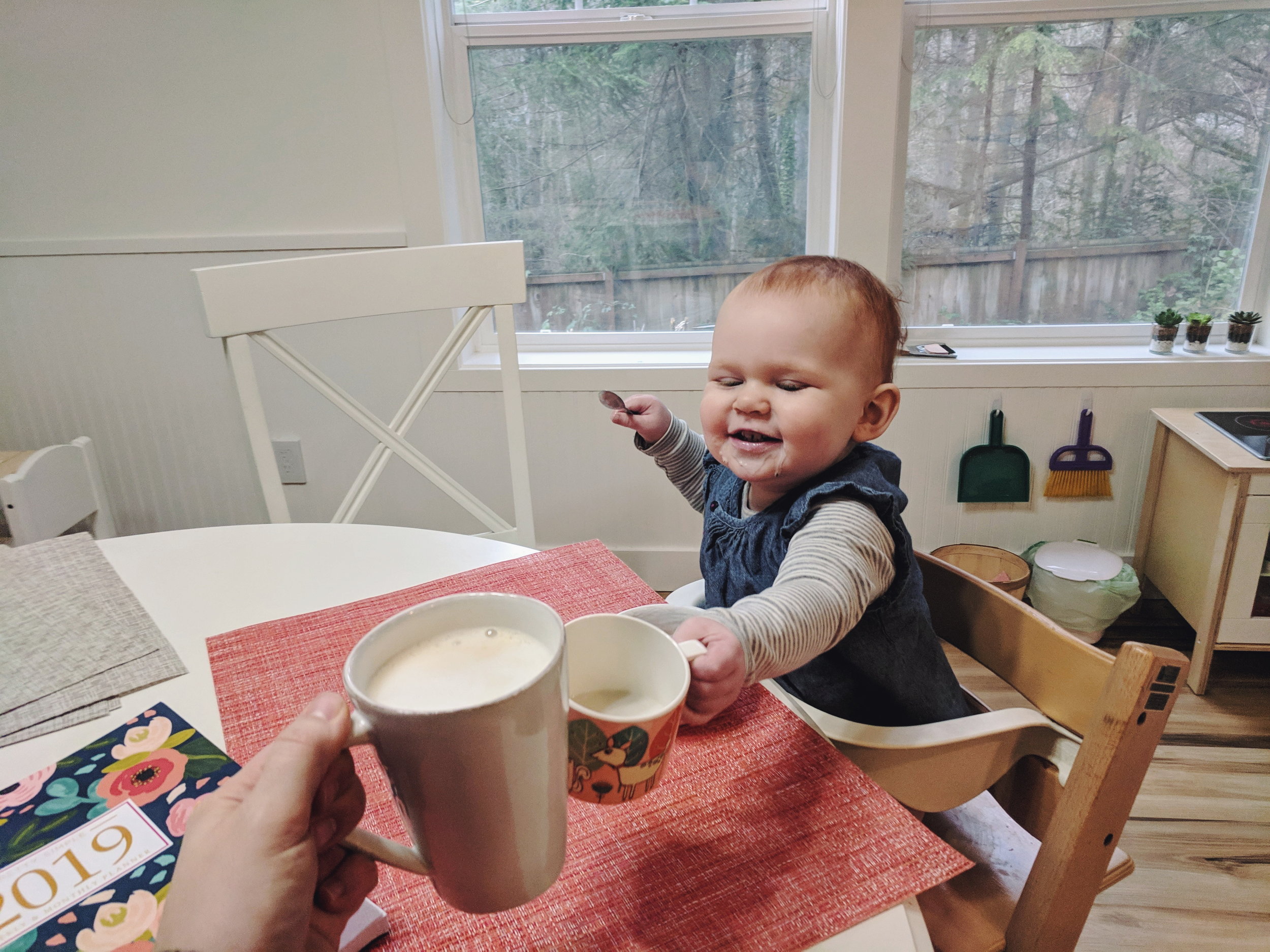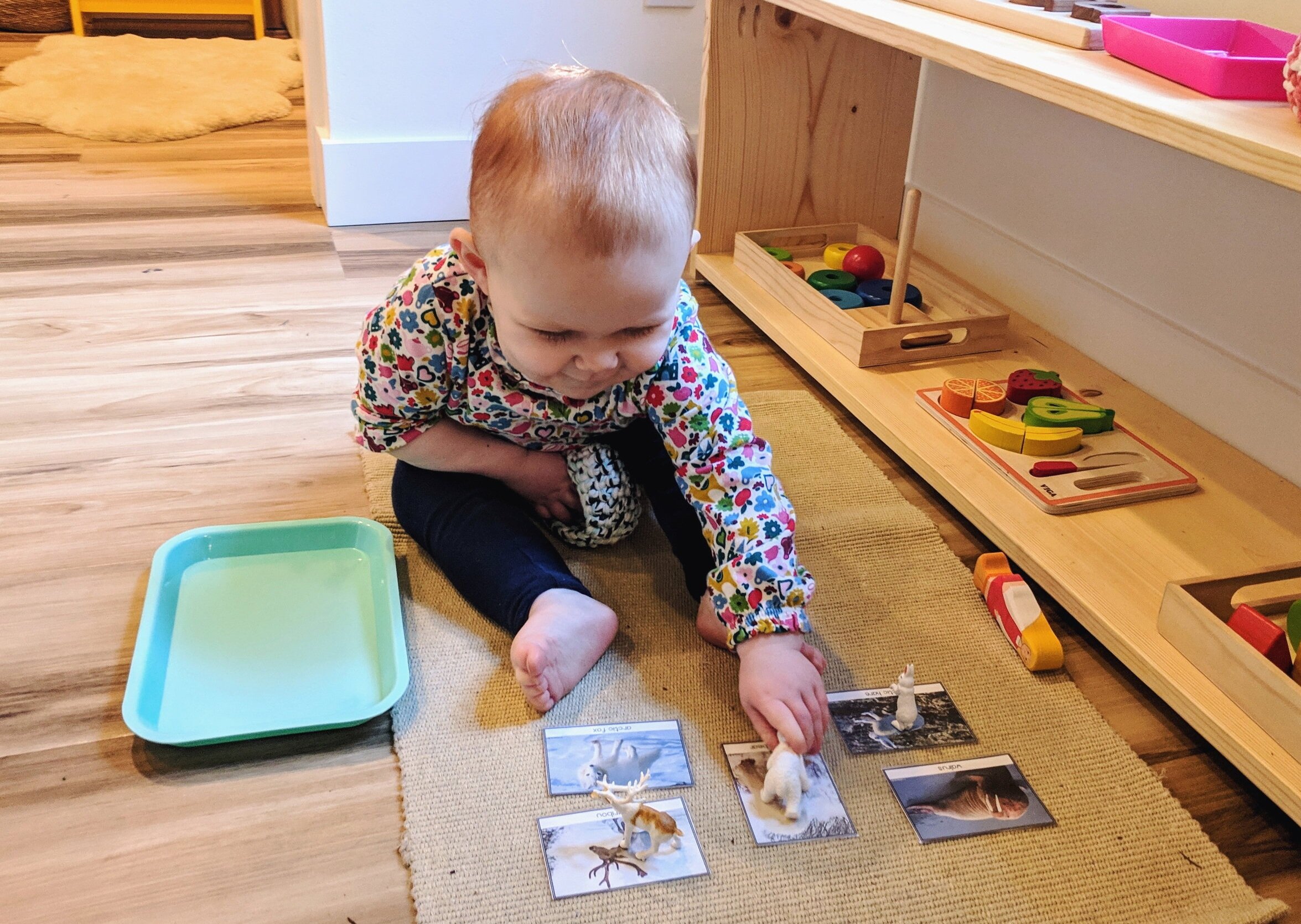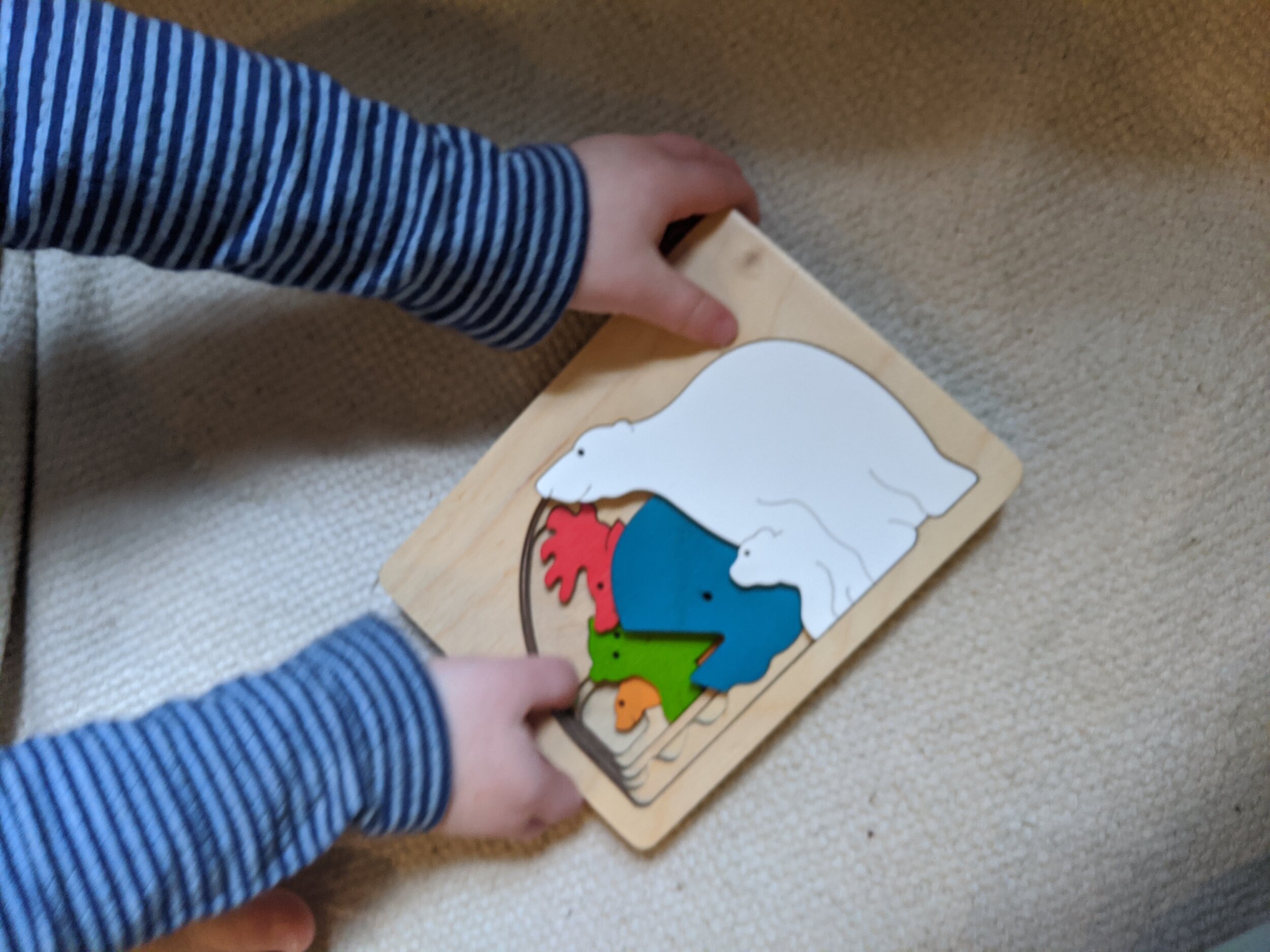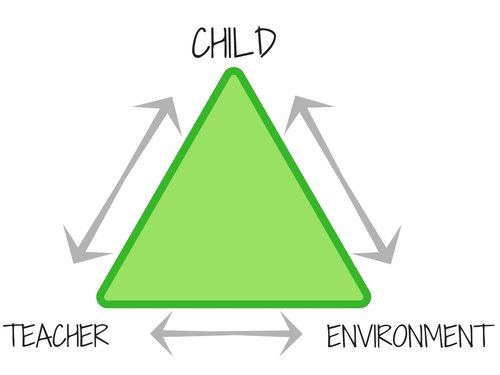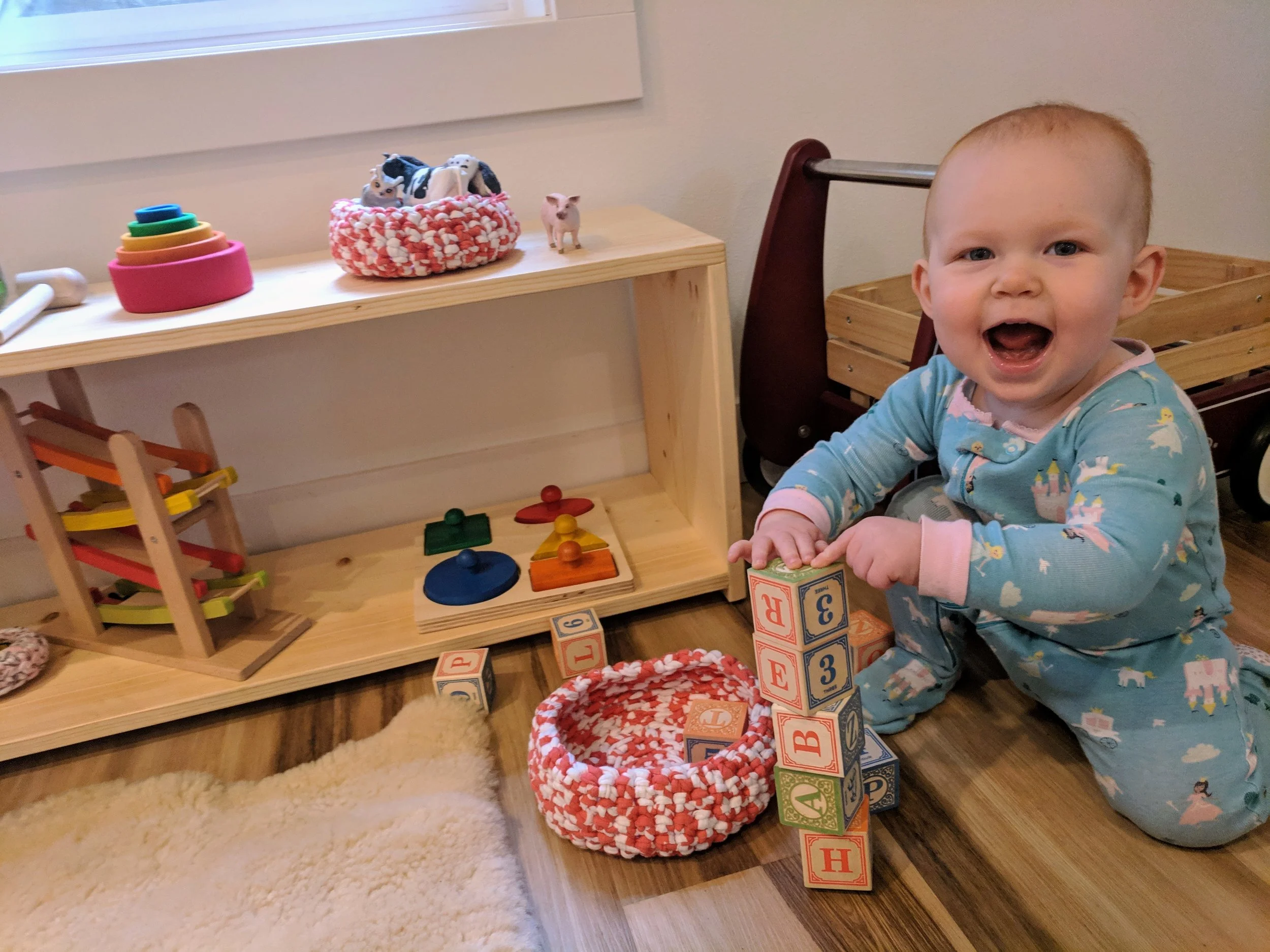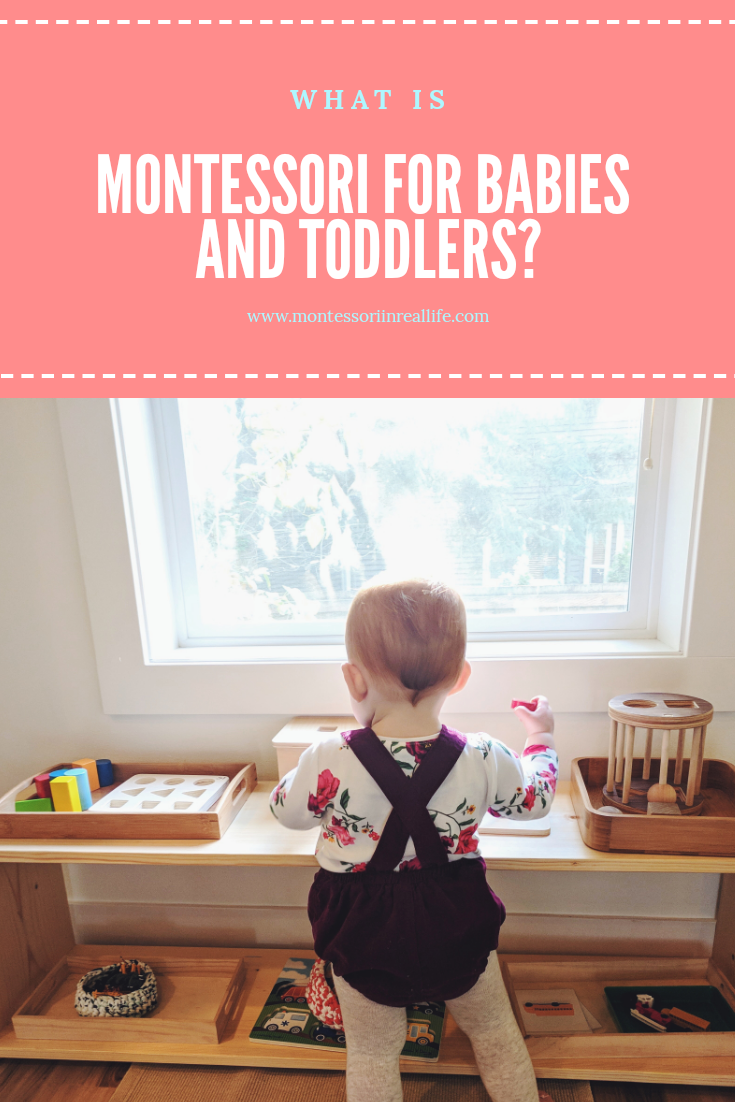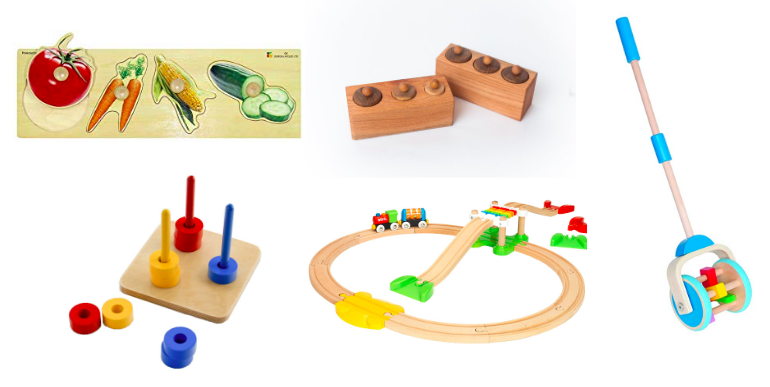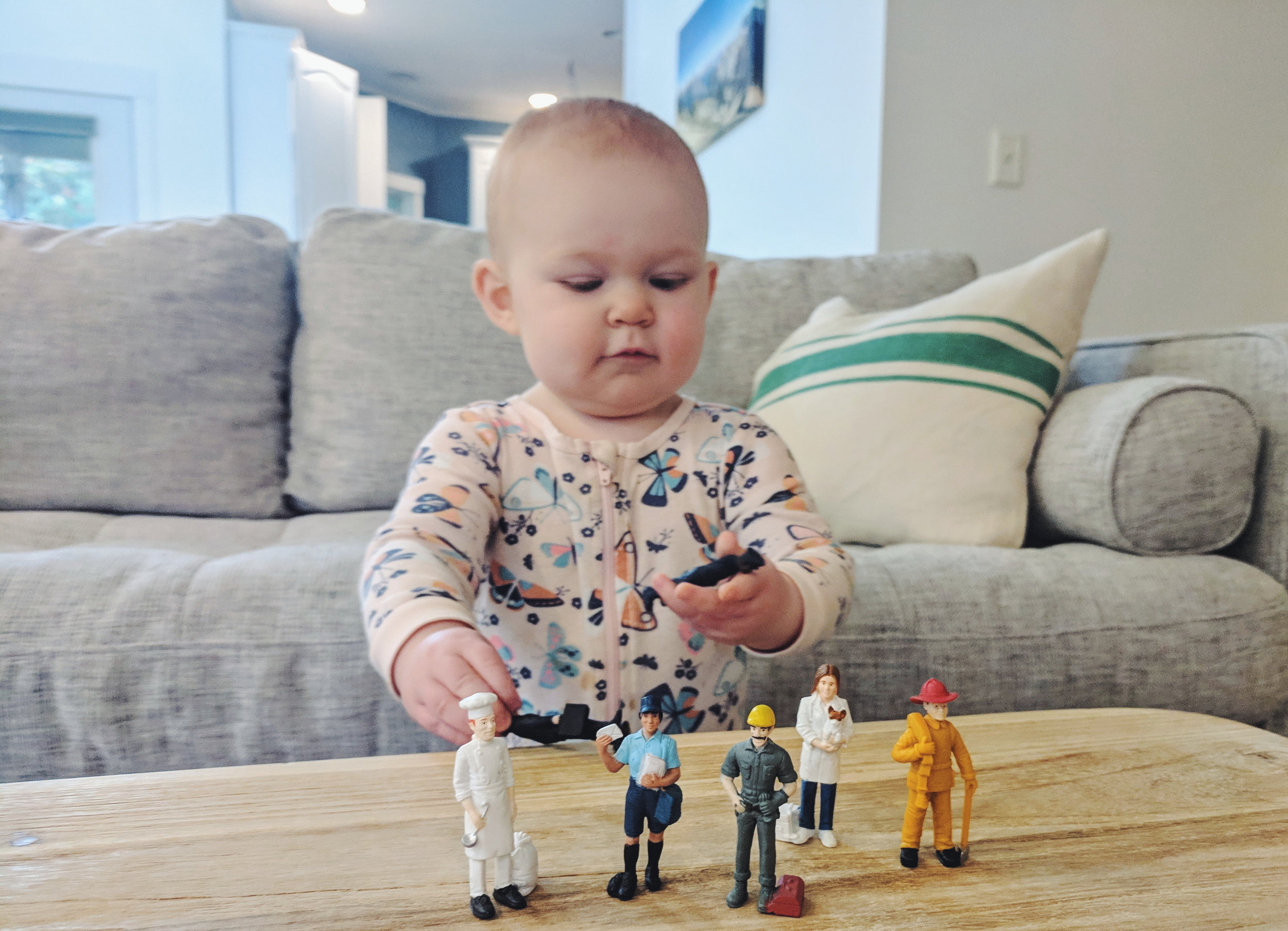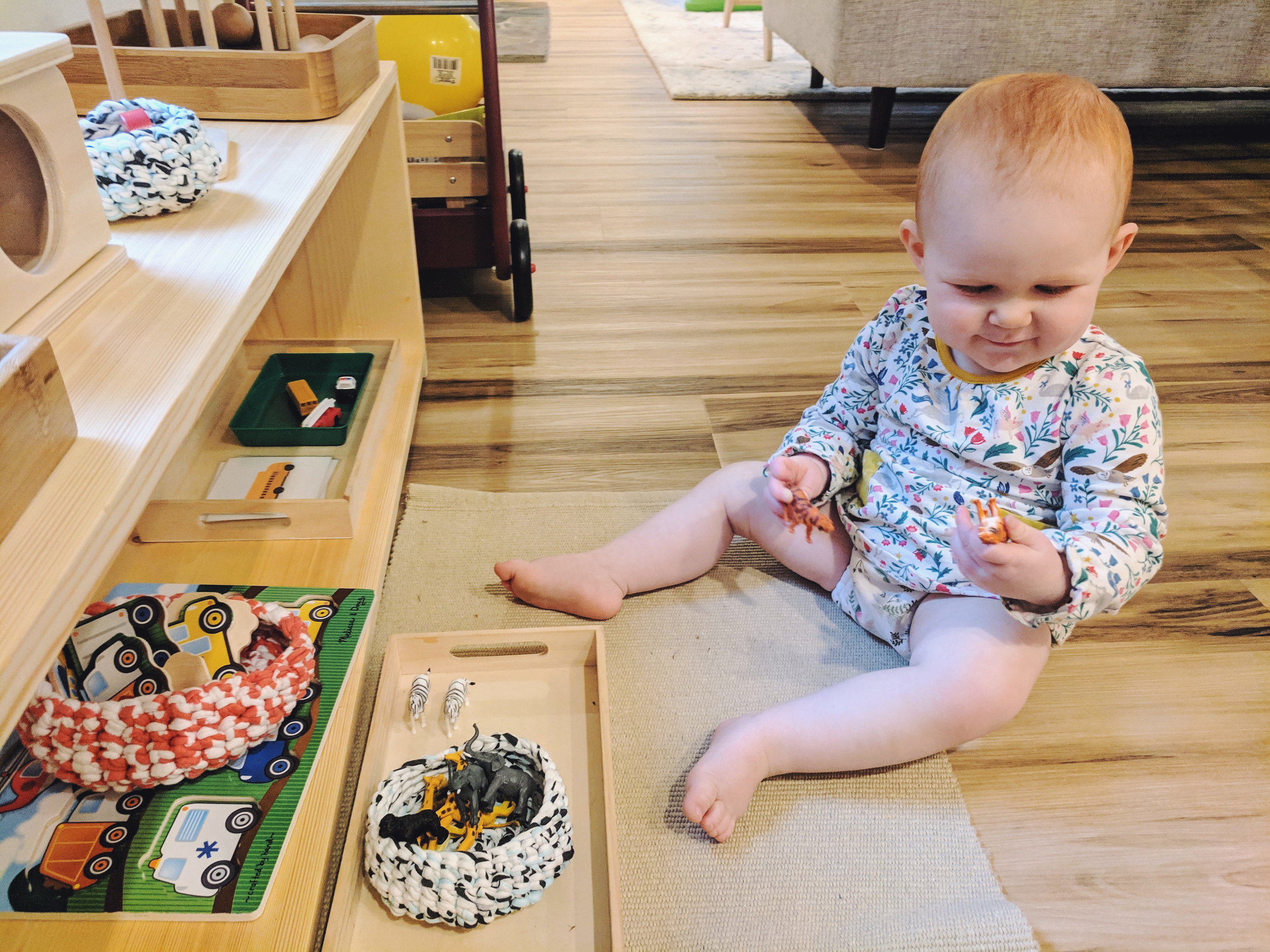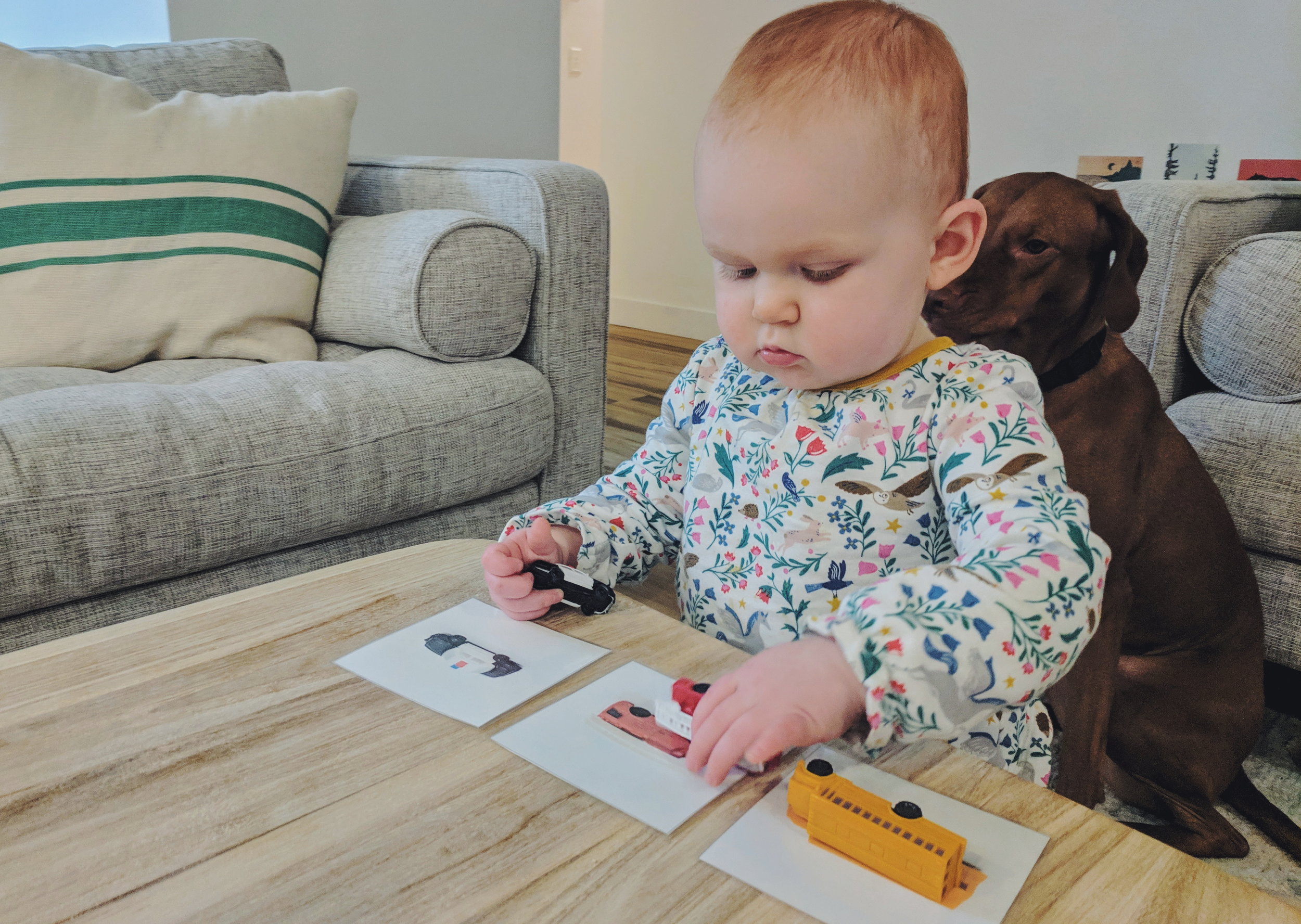Our Montessori Shelf at 22 Months (and why your toddler may not be interested in toys)
Montessori in Real Life
It’s been a few months since I did a “shelfie” post, in part because D has been so absorbed in other activities lately! She spends a good amount of time at home in our kitchen, where she has her own little kitchen and sensory table where she likes to work. She loves to help me cook, and even clean, but also just to pour and transfer back and forth. You’ve probably seen lots of examples of this on our Instagram account! She is also in a big gross motor phase, so we make sure to get out of the house every day to meet her exercise needs. The Pikler and ramp my husband built has also been great, as has the Wheely Bug she still enjoys scooting around the house on. Lastly, but most importantly, is her love of books. She would choose reading books over any other activity, anytime. Needless to say we spend a lot of time snuggled on the couch reading together.
It is pretty normal for toddlers to go through phases of indifference about their toys or their shelf in general. There are many reasons why this can be the case, such as an increased interest in other activities mentioned above, but here are a few more:
They are hungry/tired - certain times of the day may be better for your toddler than others
The work is too challenging (gets frustrated easily) or too easy (bored)
It’s been a while since you’ve rotated toys on the shelf
There are a lot of distractions around - noises, voices, other things to get into that are “off-limit”
Needing gross motor outlets - throwing, kicking, running outside
Level of your engagement - some children work better with you sitting right there, others need a little space and quiet to concentrate
That being said, after a few adjustments on my end, and a good sleep, D always comes back to her shelf and her toys, and your toddler is likely to too. Some days she plays more independently, and others we engage with the toys together. I try not to have expectations and while I may make suggestions or show her a new material, I let her take the lead with her play.
Here is what we have out on D’s shelf right now. We have started to incorporate more open-ended work, as D shows more interest in it. Because I get lots of questions about this topic, I’ll just add that while she is beginning to pretend play e.g. act our real-life scenes from home (e.g. giving her baby doll a bottle) and our experiences together, she does not yet really grasp imaginative play. More abstract imaginative play comes with understanding symbols, and turning one object into another (e.g. a block becomes a car) which typically develops between two and three years old.
Large wooden building blocks - We got our wooden blocks from Wooden Story but these look great too! She has been enjoying building towers with her blocks for the past few months, mostly just to see how tall she can make it, and then “crash”. :)
Play scarves - We go to a dance/movement class once a week, and she loves to dance with the scarves there. At home, we put on music and we’ll do the same! We also like to hide her little animals in the scarves, which she finds and then re-wraps in the scarves as a hide-and-seek kind of game.
Wooden Dress-up Doll - She is pretty interested in clothes right now, as well as her dolls. So this is a nice way for her to both learn about community helpers, talk about items of clothing, and just have fun putting the clothes on and taking them off the wooden magnetic doll. This set came with a ton of outfits/uniforms, but I find it better to put out just a few options at a time.
Felt board and felt animals - We have read a lot of books and sung a lot of songs about farm animals, so it’s no surprise that she enjoys these felt farm animals and board. She likes to make animal sounds with them, and arrange them in different ways on the board. This will be even more fun for her as her imagination grows.
Geometric Sorting Board - This is one that still challenges D, but she does pretty well with it when I get it started for her. As pictured, I leave one shape on to start with, and let her fill in the rest. Whether or not she gets every correct hole on the posts, she is learning about shapes, colors, numbers, and building her concentration through this work.
Fruit and Vegetable Matching Cards - We recently started selling these as part of The Montessori Guide! We hope to make plenty more matching cards in the future. The fruits and vegetables are D’s favorite, as this girl loves to eat. :) We started with matching objects to cards and now she enjoys matching card to card. You can read more about how we introduced language work in this blog post.
Straws in a Bottle - DIY toys can be the best. I found these fun straws at Target a while back, and found a new use for them with this recycled vanilla extract bottle. She really enjoys the fine motor practice of putting the straws in, pouring them out, as well as opening and closing the cap of the bottle.
Shape Sorter - This is such a beautiful, handcrafted shape sorter made by Heirloom Kids. I love how there are only 4 shapes so as not to be too overwhelming for a toddler. The sliding door makes it extra fun too. We started this one with only the sphere and cube, and now use all 4 shapes. She finds her own ways to use this material too. ;)
Matching Color Tablets to Rainbow Flowers Book - One of D’s favorite activiteis lately is matching objects to books. We started this with the Toob insects and Up in the Garden, Down in the Dirt book. This color matching version is our latest, inspired by D’s interest in colors, especially “Blue!”
Farm Animal Puzzle - D isn’t huge into puzzles, but again, she loves farm animals. I love how realistic the images are on these puzzles. It is definitely a bit more of a challenge because there aren’t photos of the animals under the pieces, so it’s one to work up to if your toddler has mastered simpler wooden ones.
Mystery Bag - For this activity, I placed several familiar objects (appropriately baby-themed) in a small drawstring bag for her to discover, ideally by touch before sight. She really enjoys reaching in and labeling the objects, and of course using them with her baby doll. This kind of discovery bag is easy to create with whatever objects you have at home!
Note: This post contains affiliate links. If you purchase a product through one of these links, you won’t pay anything extra, but I will get a small commission, which helps keep this blog going. Thanks for supporting Montessori in Real Life!

